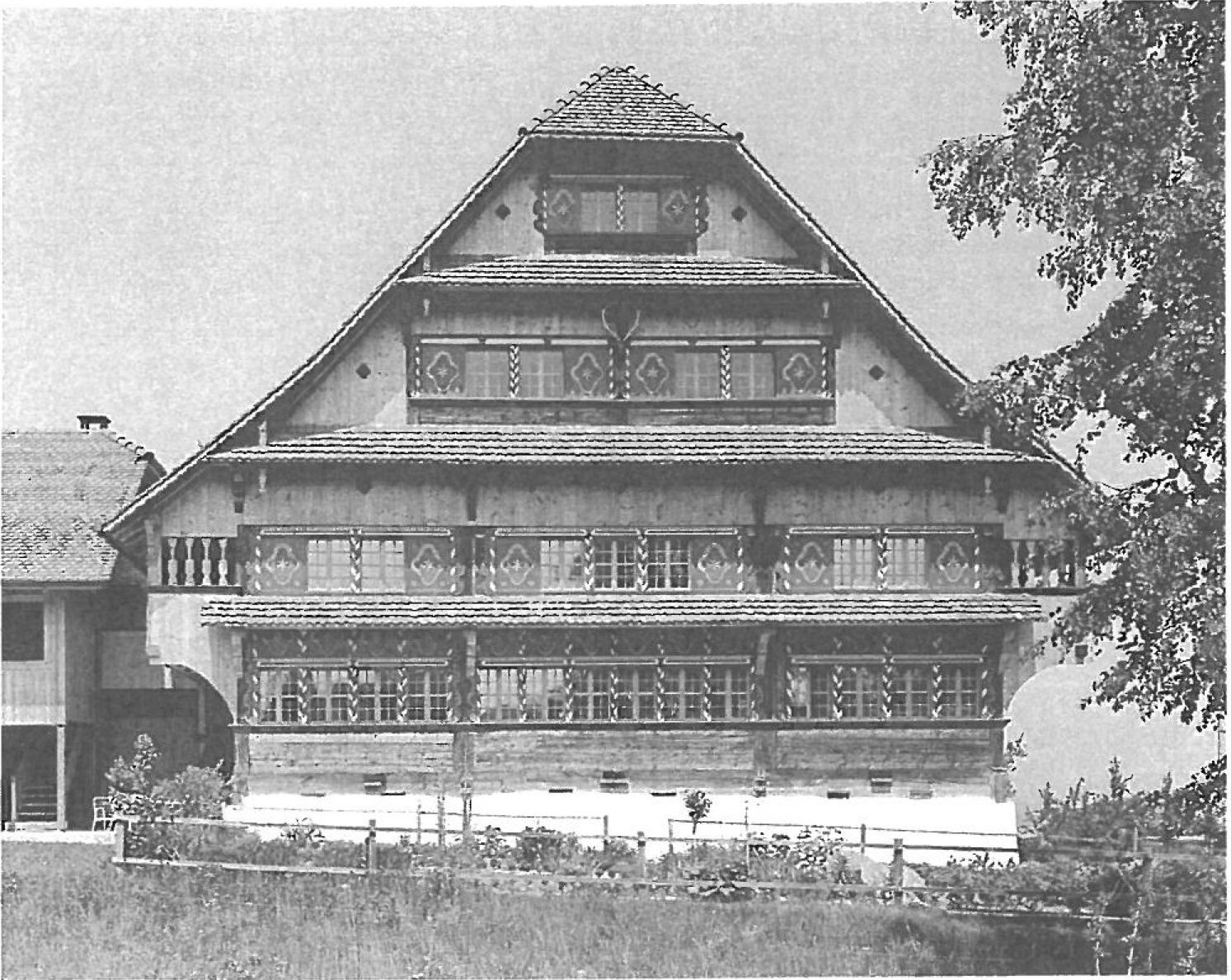
The restoration of the Middle-Huprächtigen farm in Nottwil
Claus Niederberger
Contents
1. The place
2. History of the Farm and the House
2.1. Honorable Before the 18th Century
2.2. Honored in the 18th Century, the Hüsler Family
2.3. Change of Ownership in the 19th Century
3. The object
3.1. The Farmhouse
3.2. The Outbuilding
4. The Construction Survey
5. The Restoration
5.1. The Project
5.2. The Outbuilding
5.3. The Farmhouse Inside
5.4. The Outside of the Farmhouse
Sources and Literature
A detailed treatment of the restoration at the Middle-Huprächtigen farm beyond what is customary in the annual report of the preservation of monuments 1991/92 (pp. 76-108) is advisable for the following reasons. There is extensive source material on the history of the farm, which documents the importance of the farm and was processed by Hans Ulrich Schiedt. This manuscript forms the basis for the chapters on the history of the farm. In addition, from a monument preservation point of view, the restoration of the Middle-Huprächtigen farmhouse is one of the large and important projects in the field of rural architecture in Central Switzerland, both in terms of volume, construction and decorative design. (Editor's note)
1. The Place
The Huprächtigen farm group is located approx. 1.5 km south and 180 m above Lake Sempach, on the northeast slope of the Notteler Berg and 2 km south of the village of Nottwil in an intact, enchanting landscape. The farm group consists of individual farmsteads Small-, Large-, Middle- and Upper-Huprächtigen. Middle-Huprächtigen has two farms, of which the present farmhouse is assigned to the western farm and is located above the stable barn on the way to the Flüss Chapel. The western farm of Middle-Huprächtigen still includes 13 hectares of land and 2 hectares of forest with the following buildings: the farmhouse with a side building attached to the slope, with a covered wooden shelter in front of it, the stable barn and a smaller outbuilding that used to be the farm's own cheese dairy as well as a distillery and wash house.
2. History of the Farm and the House
The history of the farm is mainly documented by letters of purchase and reports of division; There were no mortages for Huprächtigen at least in the 18th century. The Hüslers, the family who built this farmhouse, were wealthy, influential people who did not depend on this type of credit creation. Their wealth also meant that the many documents connected with farm purchases and farm divisions do not go into as much detail as they do with smaller farms and poorer people, where things that are so irrelevant are often mentioned.
The manuscript of a story of the Hüsler family in Huprächtigen by Professor Dr. Joseph Stirnimann, which the author kindly made available, was able to contribute valuable things and was useful because of the many references to sources and purchase and division protocols.
2.1. Huprächtigen before the 18th century
The name Huprächtigen suggests that its origin goes back to the Hubrecht, right to Hube / Huobe and thus points to medieval and feudal origins. According to Brandstetter, on the other hand, the name is composed of the alamannic 'hunt' (dog) or 'hun' (hun) and 'perath' (splendor) (Brandstetter, p. 83). Confirmation of at least one in the high Middle Ages history of this farm can be obtained from written sources. A document from the Engelberg monastery from 1235 says that the knight Ulrich von Büttikon sold all his possessions in Huprächtigen to the Engelberg monastery in the presence of Count Hartmann von Kiburg (Gfd. 51, 1896, p. 30f.). Another source, the Ruswiler year book from 1488, indirectly suggests the wealth and importance of the farm residents, as it mentions one of those who were of Huprächtigen to be the founder of the church (Gfd. 17, 1861, p. 2ff.).

Fig. 1 View of the main southern front with the masonry base and the stand-plank construction. Row windowing on the main floor and two resp. three-part windowing of the upper floors. State after the stowage.
A first document of the farm and its inhabitants gives a so-called surcharge from 1668. A surcharge is a type of loan that “could only be established by husbands for women's property obtained from them” (Lemmenmeier, p. 85). The judge Walter Meyer acquired the farm Huprächtigen with the help of the great dowry contract of his father-in-law, the wealthy Hans-Jakob Stirnimann from the farm in the Rot, Ruswil. (Niederberger, p. 48) Walter Meyer established this special form of mortgage on the dowry of his wife Elisabeth Stirnimann. With that he took possession of two farms: 2 farms zuo hubrächtigen, with hüsern, stoking, spichez, acher maten, willow bünten herb and tree gardens, in wood and fäld, also other revenge and avenging, so the gods ... Ober etzenberg här der strass, ... hold one gefor everything zuo sour 200 Jucharten ofes everything ends up by- and against each other in a zuo kilchöri Sursee and Anzpt Ruswyl coverings ... Item on wall without required 28 Jucharten (valid and purchase protocol 1668). The total area of 228 Jucharten, converted into today's figures around 83 hectares, also meant an extraordinarily large farm in our region back then.
The early death of the parents was probably the reason that the farm was not passed on to the children who were still underage at the time, but sold to the Hüsler family in 1692. Descendants of this respected family of officials from the St. Michelsamt still live in Large-Huprächtigen today. Already from this time date, partial family connections between the nearby farms Huprächtigen, Rot, Etzenerlen, Etzenberg and Merzenberg. The Hüsler of Huprächtigen were, for example, closely connected to the Stirnimanns in the Rot for several generations through three marriages, several sponsorships and also in other matters.
2.2. Honored in the 18th Century, the Hüsler Family
In 1692 the three brothers Hans-Jakob, Jakob and Klaus Hüsler from Rickenbach bought the two farms in Upper Huprächtigen at a price of 26,000 guilders and with a tip of 150 guilders, which is converted to today's figures over 5 million francs. But only Hans-Jakob moved to Huprächtigen.
The fact that a rich and important farming family had moved here with the Hüsler is also shown by the tax registers of the Ruswil Office, which were created between 1691 and 1702 and in which Hans-Jakob Hüsler is listed for the first time in 1697. With an annual tax of 500 guilders, he paid the second highest tax of all farms on the Ruswil mountain after the farmer Stirnimann in the Rot (Stirnimann, manuscript, p. 2ff). In today's figures, 500 guilders correspond to an annual tax of around 100,000 Swiss francs.
In 1709 and 1713 Hans-Jakob, together with his four sons, was able to expand his property through the purchase of the two home lands Lower-Huprächtigen (purchase letters from 1709 and 1713). They were now in possession of almost the entire Huprächtigen area. The following changes and reallocations into large and small, upper, lower and middle Huprächtigen, in farms on which different owners operated, were a consequence of the divisions and sales and therefore do not represent sizes that have remained the same for a long time.
In 1719, after the death of his father Hans-Jakob in 1717, his son Hans-Martin Hüsler came into the possession of a farm that is now considered to be a Middle-Huprächtigen (Stirnimann, p. 5f.).
It is uncertain whether Hans-Martin Hüsler, his brother Joseph, or both of them together, had the stately baroque Middle-Huprächtigen house built in 1734. However, the coats of arms and initials on the painted lower face of the miter sign point to Joseph Hüsler and his wife Verena Bächler, who also ran a farm in Huprächtigen. The proximity in which the two brothers appear in the sources and the fact that they ran their two farms, which were inherited from their father for a few years before 1719, allow these assumptions to be made.
In the report of the division of 1755, which had become necessary after the death of Hans-Martin, all his possessions were estimated, listed and summed up. Of course, a description of the esteemed farm was not to be missed: Ersdich is his farm and güöter zuo Huthbrächtigen with two houses, two barns, krauch and tree garden matten acher and weidland sambt the associated wall, including all wood and field, nothing except nor reserved Located in Kilchgang Nothwill and ambt Ruswill. The farm comprised 130 Jucharten land and 16 Jucharten forest, so it was still very large. The officials present estimated the farm after a previous inspection at 10,550 guilders (in today's figures over 2 million francs).
In addition, Hans-Martin Hüsler - this is also shown in the minutes - was still in the possession of another, the very large Bühl farm with 110 Jucharten (also in Nottwil church), which was estimated at 9,000 guilders.
In the division protocol, the other property titles were also listed (debt titles and validities are usually missing in such rich families). What the father had already given his children was added up: his daughters Anna married to Stirnimann and Maria married to Thürig the trousseau and his son Jakob Ross and Vich Früchte and other household items and the same all as he buys from his father. So the son had taken over the farm while his father was still alive. The division of cash assets to the disadvantage of the daughters is also socio-politically revealing: the daughters each received 8,130 guilders, the son 13,550 guilders. Another section of the division protocol from 1755 shows Hans-Martin as a great believer. The many loans that he had issued established the influence and power that was found in the representative building of 1734 found expression. On the other hand, the total debts amounted to 14,161 guilders and thus much more than the estimated value of his manorial farm Middle Huprächtigen.
Another division was then made among the sons of Jakob Hüsler - Jakob, Leonz and Franz, from whom Franz took over Middle Huprächtigen in 1781. In the division protocol, a land holdings that had grown to 162 Jucharten up to the death of Jakob Hüsler in 1776 were calculated. It is interesting that 30 Juch species were designated as matt land and 132 Juch species as pasture land. This proves that the transition to cattle breeding and dairy farming had already been made and completed here in the 18th century. That this type of cultivation did not exist since ancient times is shown by the traditional interest, which was mostly still calculated in grain, and also the early logs, which all include fields and a granary in addition to pastures and meadows.
2.3. Change of Ownership in the 19th Century
Franz Hüsler was able to take over 100 of the 162 Jucharten from his father. After his death, when the division had become necessary again, only 58 Jucharten could be assigned to his son Johann Georg. For the first time, a Hüsler ran into financial difficulties as he had to renew or rebuild prescriptions of 7,434 guilders that were already on the farm (with an estimated value of the property of 11,400 guilders; Stirnimann, p. 14f.). In a few years the debt grew to 10,680 Gulden. This was probably the reason for another sale, this time outside the family to Joseph Hofer from Neuenkirch.
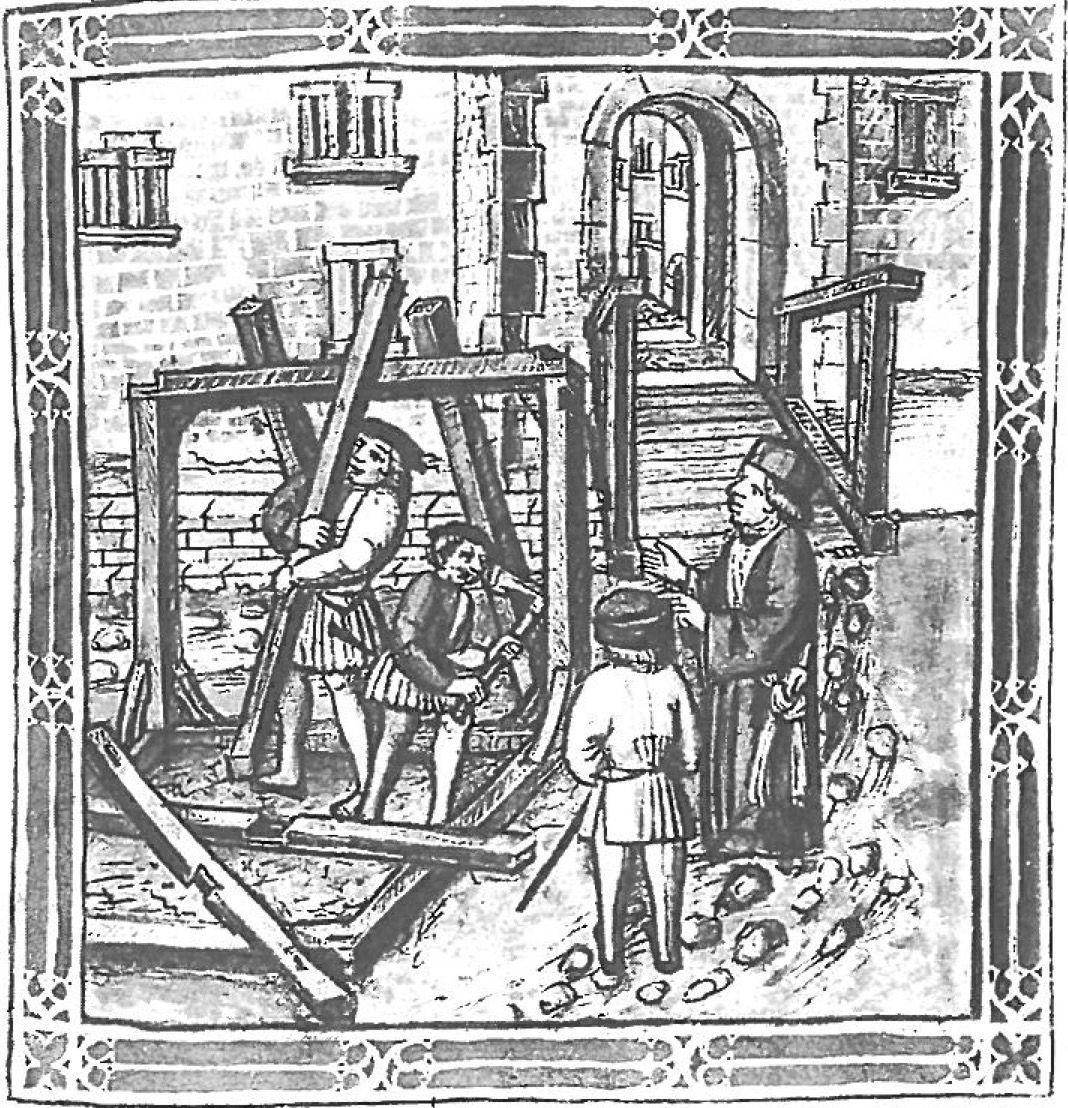
Fig. 2 Erecting a stand construction. Illustration from the Lucerne illustrated chronicle by Diebo] d Schilling 1513. Fol. 321 b.
The purchase record from 1837 shows how Johann Georg Hüsler got into ever greater difficulties, how he owed his many creditors the interest, often up to five years, since he took over the farm.
It is revealing that precisely at that time, when payment difficulties arose, the loans and protocols, in addition to the usual formulas, also go into greater detail again. It was stipulated that a cow, a drawbar harness, three pieces of sawdust and the stone slabs still available at the house would also be taken over with the property, and even that the seller should fetch three loads of household items from the buyer. Georg Hüsler's reservation was that he could live in the house with the whole family for another month and that the necessary firewood would be available to him for this time.
Joseph Hofer was also deeply in debt. The price of the farm was set at 17,700 guilders. From this he took over the debt from Johann Georg Hüsler (10,680 guilders). Of the remaining 7,019 guilders, he only paid 2000 guilders in cash, for the rest he set up new loans. After Joseph Hofer's death in 1855, the property passed to his son of the same name. However, his sons, Sebastian and Stephan, soon found again, in 1867, forced to sell to Augustin Burkardt (Stirnimann, 5:15 pm). A loan protocol from 1872 shows that many of the existing loans, which now amounted to 35,281 francs, were only accepted after Hofer's father's death.
After only six years of ownership, Augustin Burkardt sold the farm to Melchior Weingartner. He obviously managed to consolidate the financial situation and keep the farm.
The debts lying in the farm, which Melchior Weingartner had taken over from Burkardt, amounted to CHF 38,921 in 25 different 'items'. With a purchase price of CHF 68,500 and assuming this debt, he still had to pay CHF 29,578. How much the debt depressed him, too, can be seen from the fact that he, too, was only able to pay 4,550 francs in cash, built new loans for part of it and had to pay off the rest of 9,578 francs in installments of 684 francs.
And as before, the financial pressure meant that the sales contract now regulated interesting details again. For the first time ever, part of the house itself was described: Burkardt wanted to live in the house for another month after it was sold. For this he had his right to use the large parlor, the back room, 3 chambers, and the cellar under the back room alone and the kitchen together with the buyer and to use the buyer's firewood as needed. For a month from now on, the buyer has to take two measure of milk every day and every other day an old Lucerne half-quarter of potatoes free of charge.
Since the purchase by Melchior Weingartner in 1873, the Middle-Huprächtigen farm has remained in the possession of this family and is now managed by the fourth generation of Weingartners.
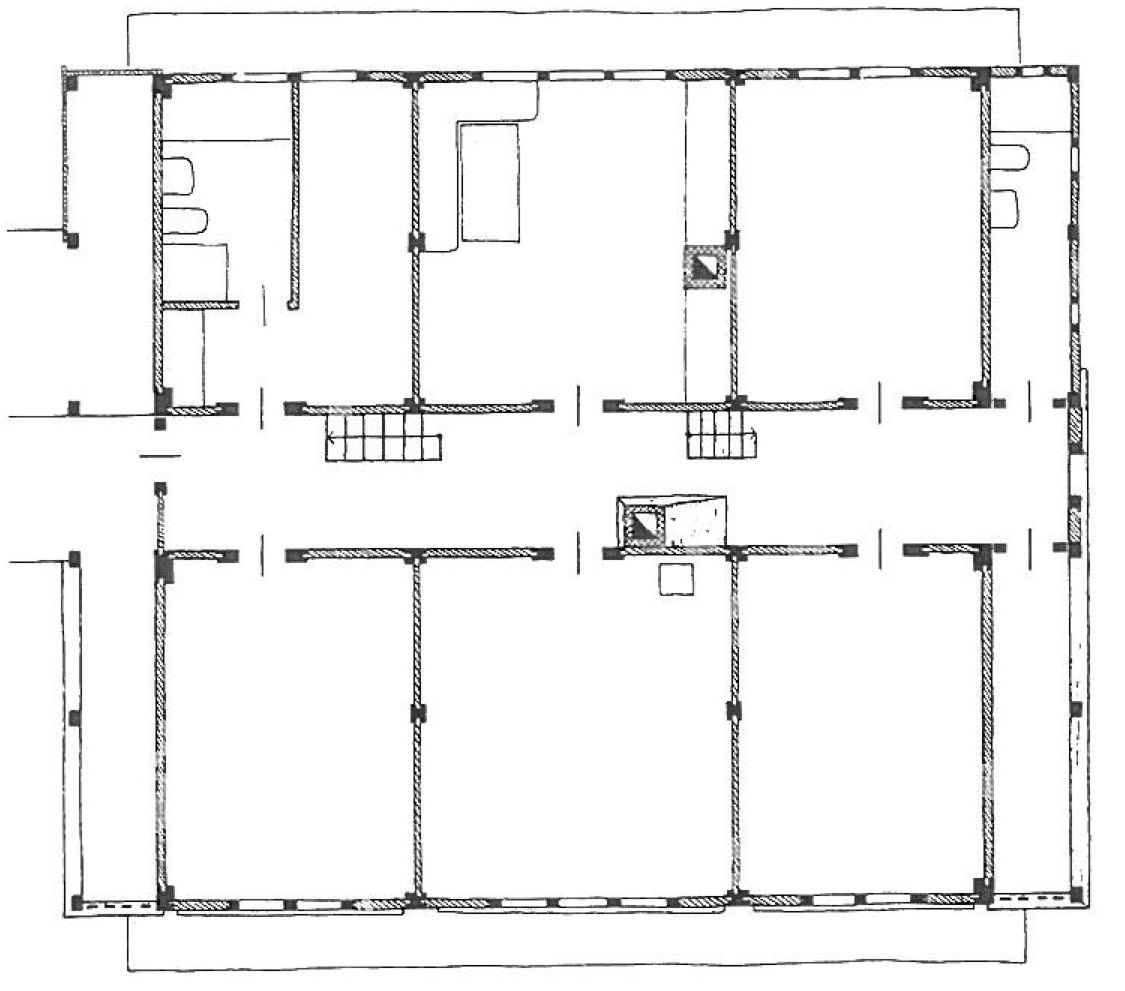
Fig. 3 Floor plan upper floor. On the right farmhouse, on the left approach of the outbuilding. Condition after the restoration. M 1: 200.
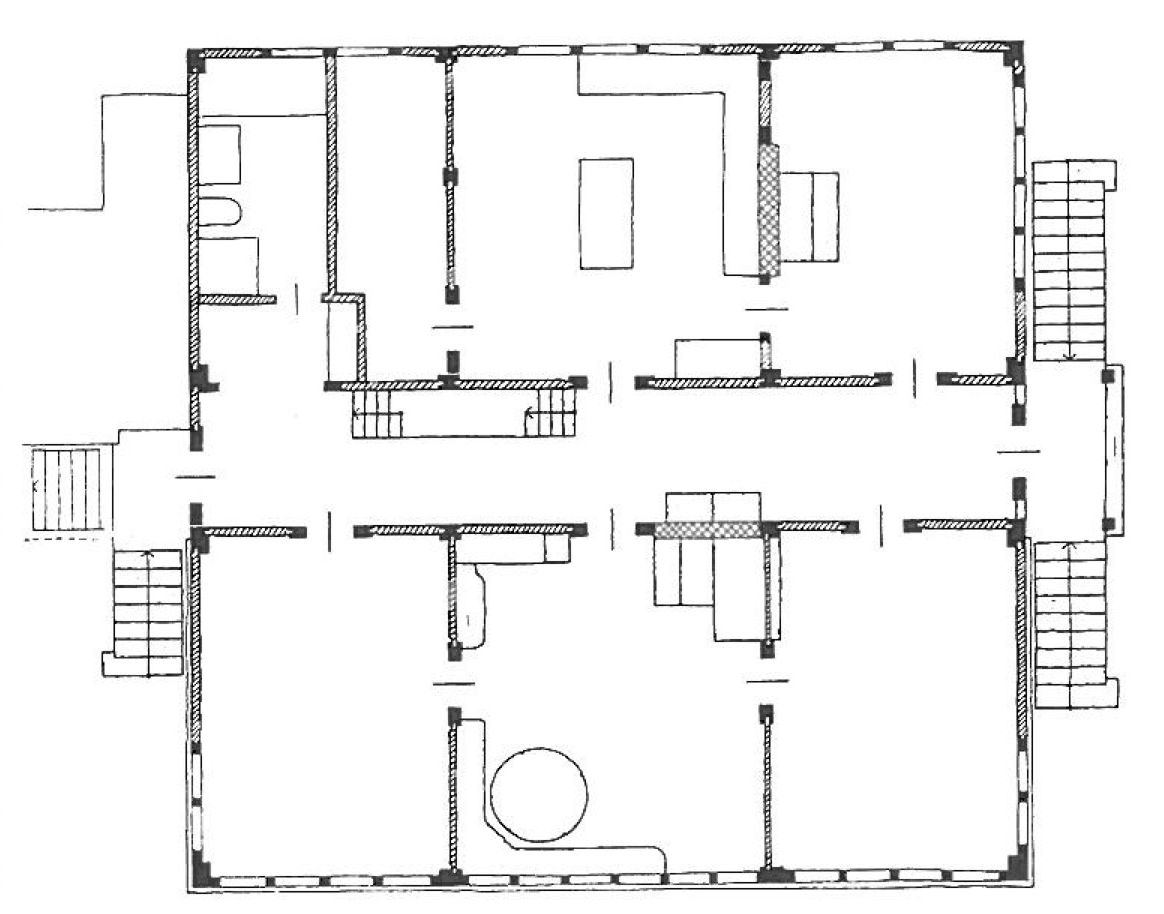
Fig. 4 Ground plan main floor. On the right farmhouse, on the left approach of the outbuilding. Condition after the restoration. M 1: 200.
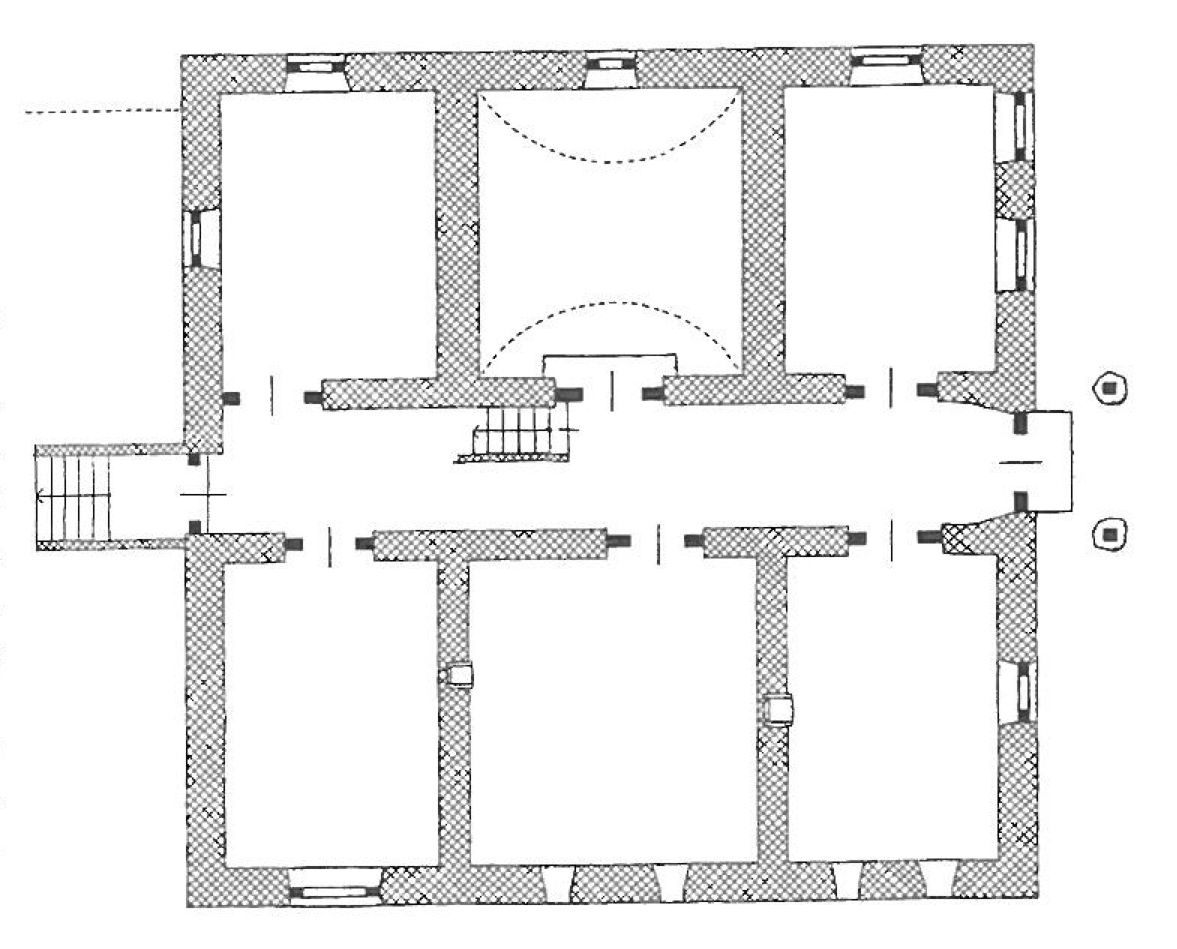
Fig. 5 Basement floor plan. On the right farmhouse, on the left approach of the outbuilding. Condition after the restoration. M 1: 200.
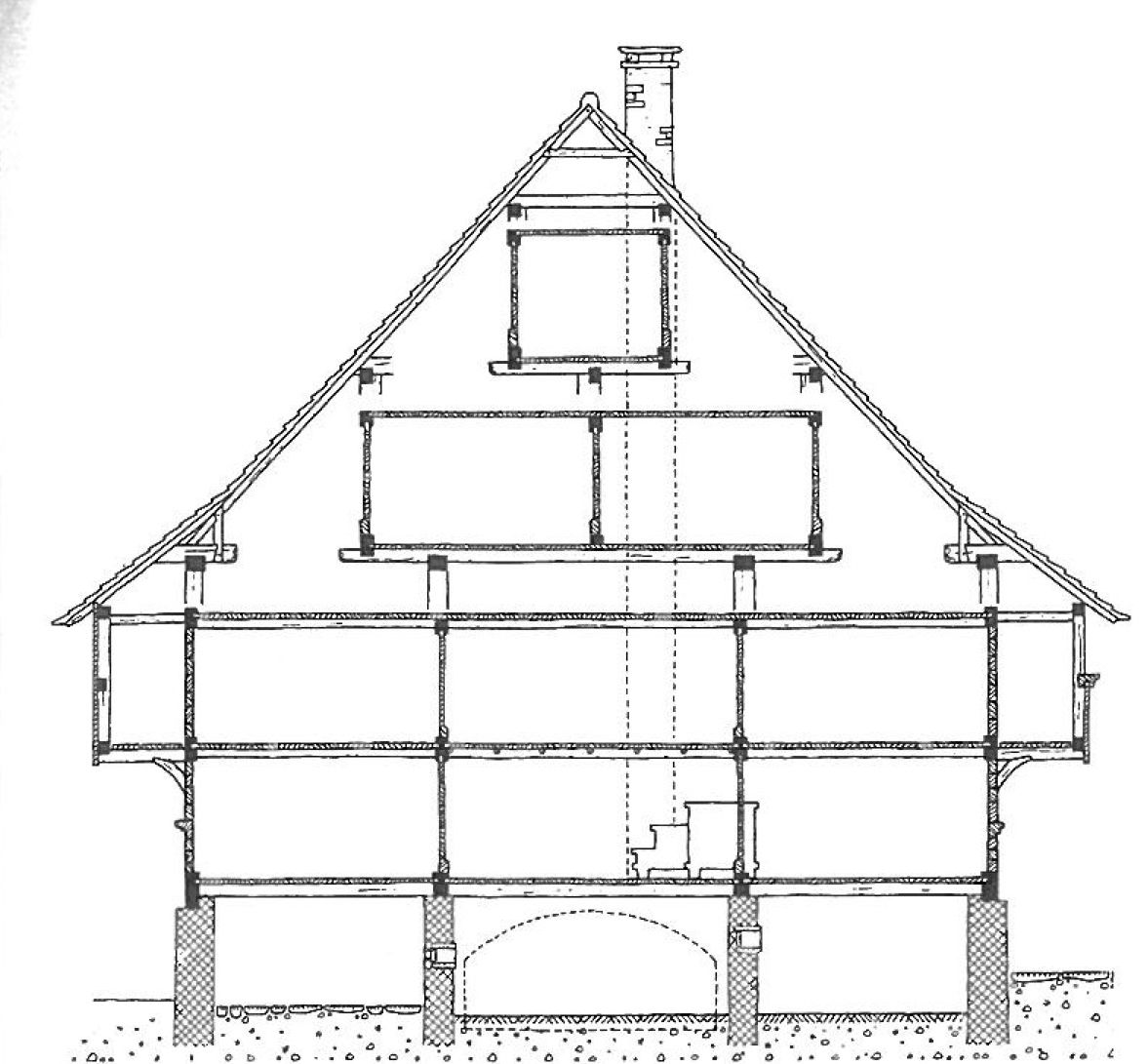
Fig. 6 Cross-section. In the attic the system of continuous mezzanine floors, the so-called "Schlüüftili", with the container-like storage and drying rooms, the so-called "Schlüüftilichammern". Condition before and after the restoration. M 1: 200.
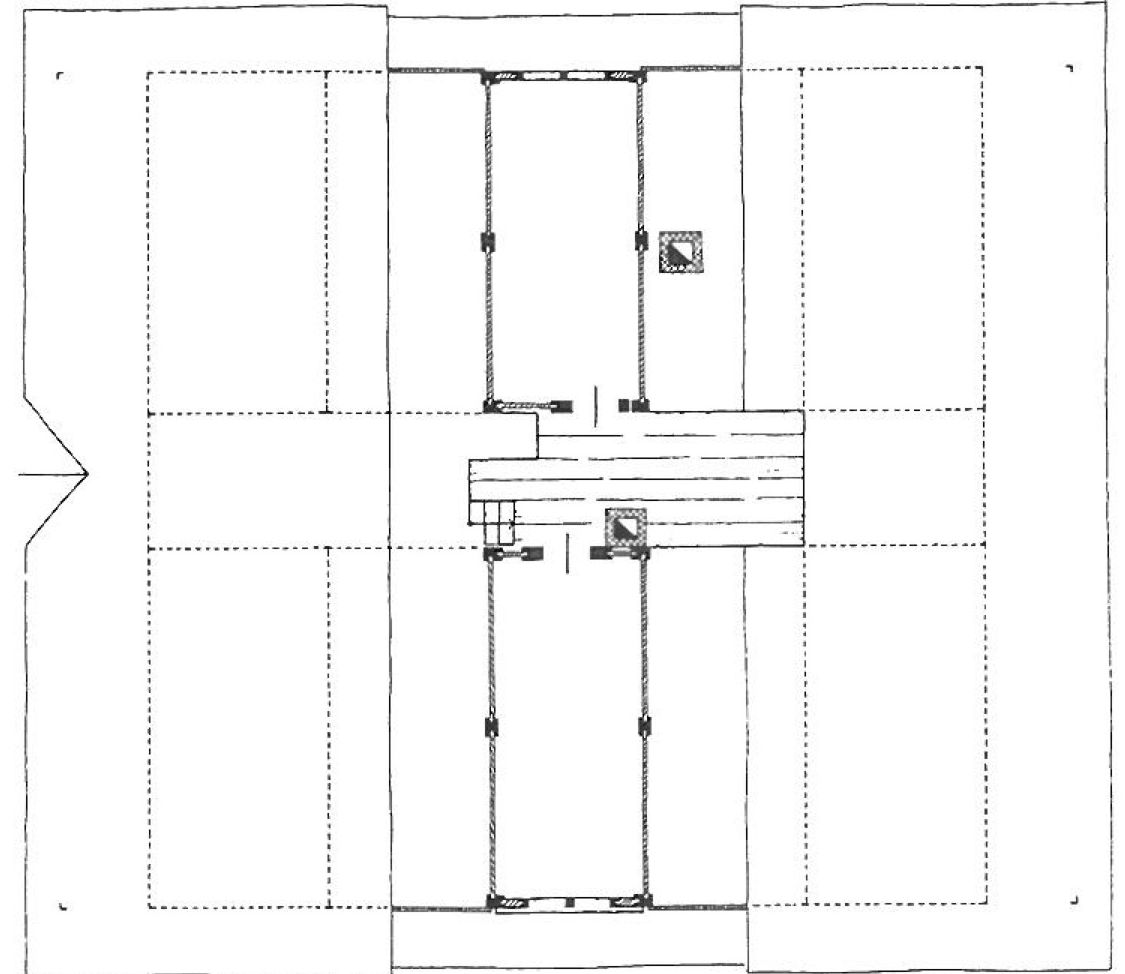
Fig. 7 Floor plan 2nd attic. On the right farmhouse, on the left approach of the outbuilding. Condition after the restoration. M 1: 200.
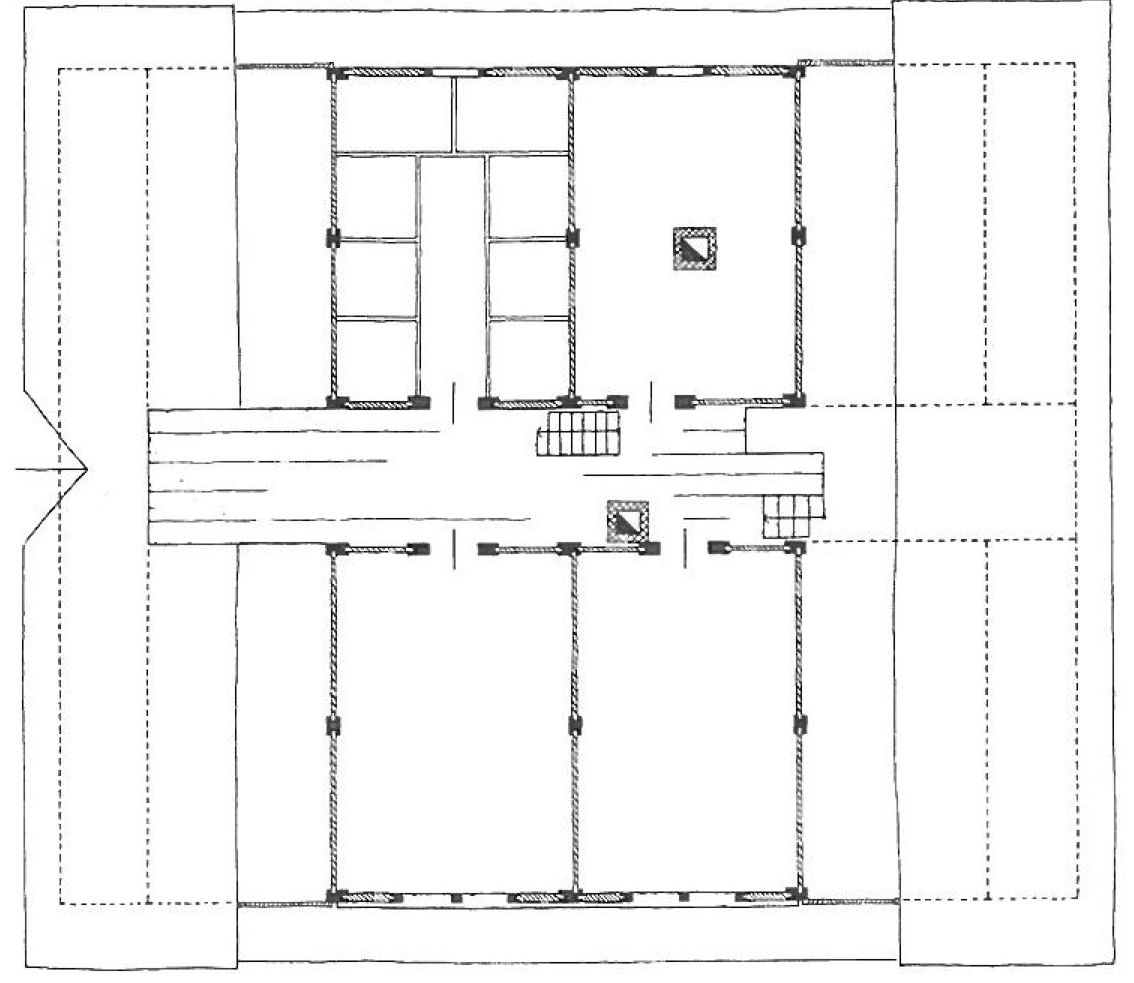
Fig. 8 Floor plan 1. Top floor. On the right farmhouse, on the left approach of the outbuilding. Condition after the restoration. M 1: 200
3. The Object
3.1 The Farmhouse
The Middle-Huprächtigen farmhouse is one of the largest and most important examples of the baroque farmhouse in Central Switzerland. The house was completely built in 1734 as an extraordinarily massive post and plank construction. In the main building alone, it has a volume of more than 2,400 m3 and is the largest baroque post construction among the farmhouses in the canton of Lucerne that has been restored in recent decades.
The farmhouse was measured in 1959 by Ernst Brunner for farmhouse research. From this he drew detailed building recordings and processed individual archive sources (Brunner, p. 230ff.). This building documentation shows that most of the essential characteristics of the house were correctly recognized at that time. Additional, new findings could be found during the building investigation and construction work in the area of the detailed designs and through in-depth archive research on the history of the farm and the house.
House organization: The large farmhouse is divided into a basement, a raised ground floor (main floor), an upper floor (arbor floor) and two and a half attic floors and comprises a total of 24 large room units: 6 cellars in the lower floor; 2 rooms, 2 bedrooms, 1 kitchen and 1 pantry on the ground floor; 6 bedrooms on the upper floor as well as 5 storage chambers and 1 smoke chamber on the two attic floors. These room units on all floors were accessed via a continuous central aisle from eaves side to eaves side.
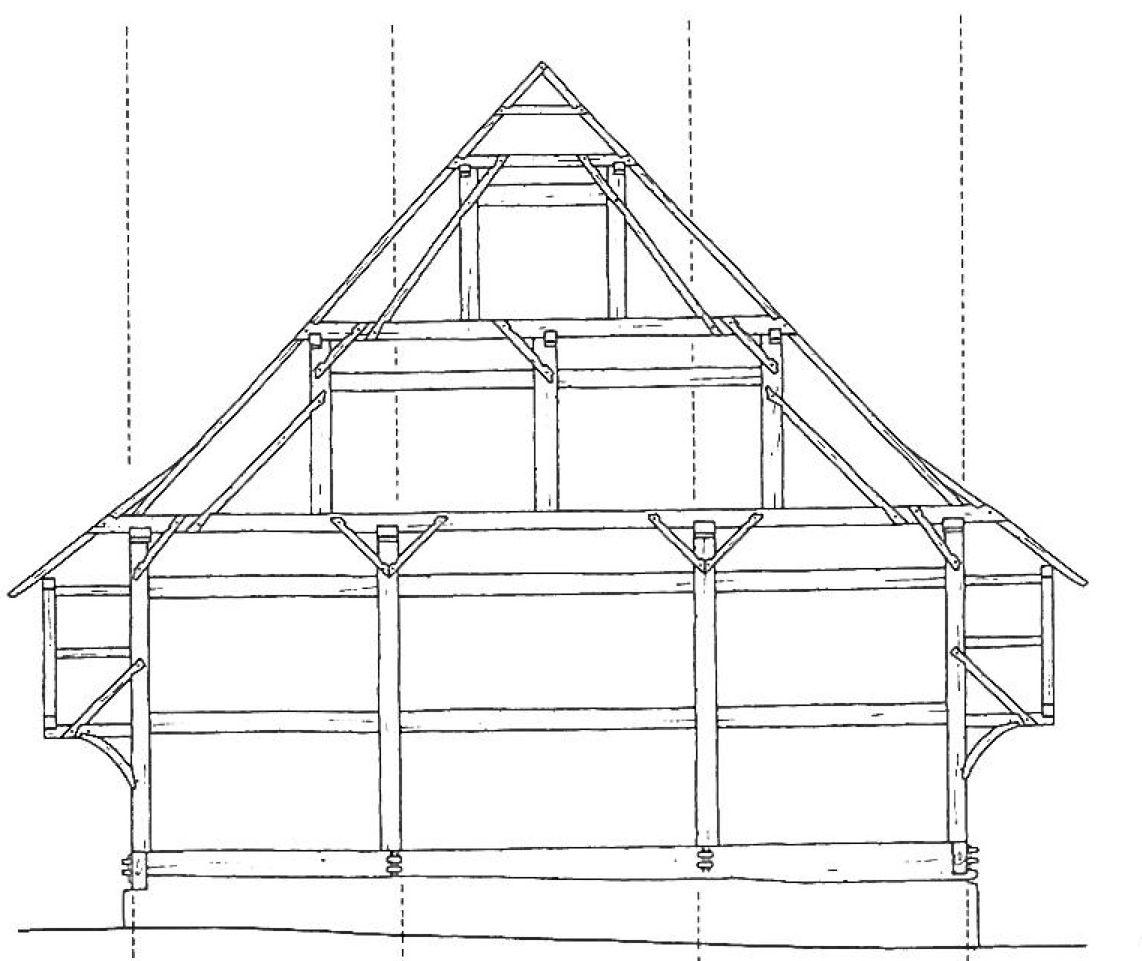
Fig. 9 House scaffolding. Cross bracing scheme of the post system with the bundle alignment planes. M 1: 200.

Fig. 10 House scaffolding. Floor plan of the post system with the alignment planes. M 1: 200.

Fig. 11 Longitudinal bracing scheme of the post system with the flange alignment planes. M 1: 200.
The large number of rooms must be seen in connection with the use of the entire building: in such a large household in the country, several generations of a family with many children lived with several servants and maids, and depending on the time of year and the situation, day laborers and craftsmen. In comparison with today's standard living conditions, it may nevertheless be astonishing that such a heterogeneous use with people of different ages and social structures in a large household with a kitchen and two rooms worked and was the rule for centuries. However, the socially anchored patriarchal power and decision-making system of the landlord and the head of the family must be taken into account.
House construction: The house is built on a square floor plan of around 14 X14 m. The basement consists of 60-70 cm thick, mortared quarry stone masonry that partially appears on the outside as a building plinth. On this base is a heavy oak sleeper wreath, divided into 7 frames, which are connected at the corners with up to three mortise lock connections.
The masonry and the threshold ring are the basis for the imposing, rising fir-tree studs. (This stud structure corresponds in principle to a skeleton construction that is still common today.) In the horizontal threshold rim, four times four stud posts are grooved vertically, which run up to the rafters of the top floor. In these uprights, framing beams are inserted horizontally on all story levels, which stiffen the upright construction and are grooved into the floor-ceiling boards. The infill between the uprights consists of 10-12 cm thick squared timber and the inside of 6-8 cm thick plank boards.
The mighty roof construction with the pantries is particularly interesting. The stands of the roof structure consists of two chair yoke groups, each with four yokes, which are placed on top of each other and are supported on the tensioning beams. Particularly in the area of the roof structure, the various vertical upright posts are stiffened in the longitudinal and transverse directions with the horizontal floor beams by struts.
The various storage and drying rooms as well as a smoke chamber were located on the two attic floors. Correct storage of grain and meat supplies in the attic of a farmhouse requires in particular good ventilation of these rooms. Therefore, the storage rooms were stacked like containers in the roof space and each one about one meter high open mezzanine raised from the floor of the two attic floors. Such mezzanines are also known as Schlüüftili, because you can slip through under the floor of these storage rooms. Storage rooms in the attic of a farmhouse are rare in our region. As a rule, the storage function of a farm, i.e. the storage of goods and the safekeeping of valuables, are solved in a detached storage building next to a farmhouse. A major reason for this is likely to have been the wood burning in the wooden house and the associated risk of a conflagration.

Fig. 12 Detailed view of the "Schlüüftili" with a storage chamber on top. Condition before and after the restoration.

Fig. 13 Detailed view of rafters that come up against stitch beams or "rafter shoes" and are braced by hangers. Condition before and after the restoration.

Fig. 14 Detailed view of the stairs from the basement to the main floor. Construction of cheek trees with saddled large block steps. One of the three-part threshold locks can be seen in the picture above on the right. Condition before the restoration.

Fig. 15 Detailed view of the stairs from the upper floor to the first attic floor. Construction made of lateral cheek trees with inserted board steps. Condition before and after the restoration.
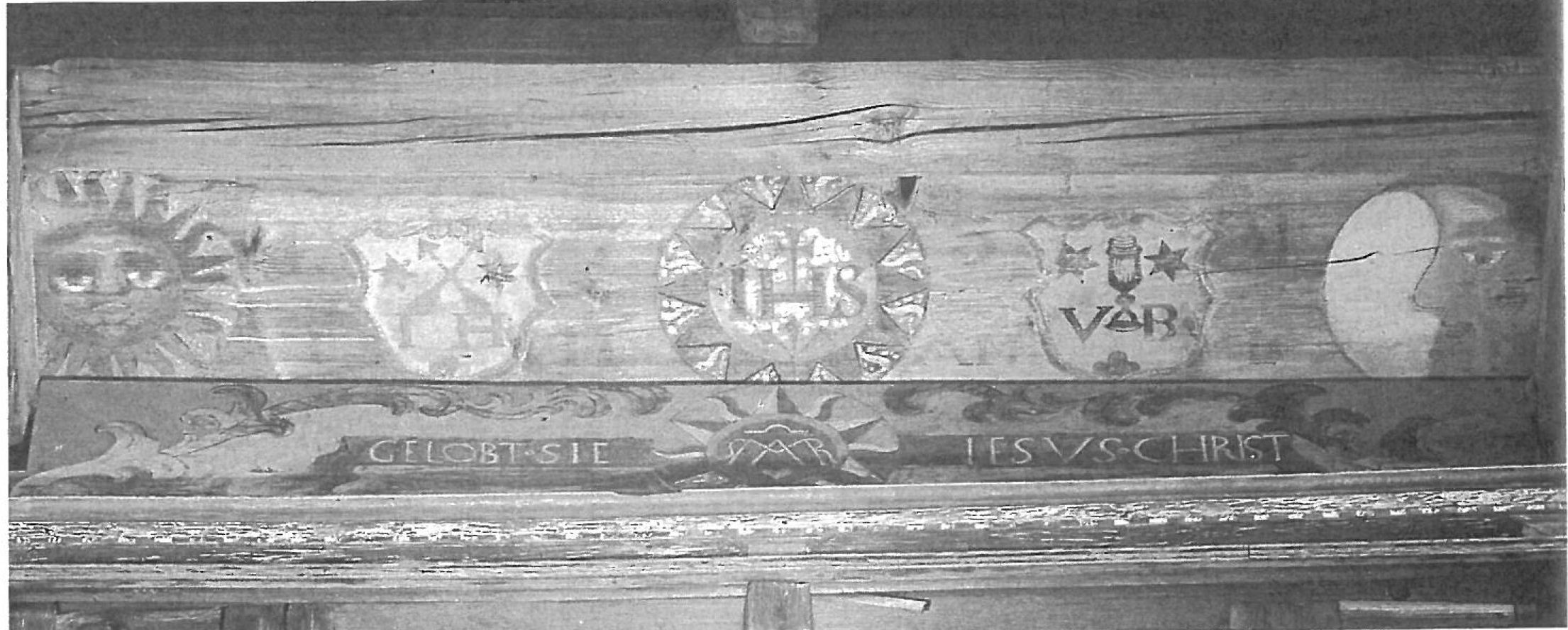
Fig. 16 View of the painted lower front of the main southern front with monograms, sun and moon as well as the family coat of arms and initials of the owner or co-owner of this house: Joseph Hüsler and his wife Verena Bächler. Documentation of farmhouse research in Lucerne. Condition before the restoration.

Fig. 17 Detailed plan of the eastern entrance to the house with the wide oak door posts that are mitered into the lintel beam. Door leaves made of oak wood with standing boards inside and outside with a double frame and panels with flat carvings. The year of construction “1734” and the builder “ZIMER • MAN • MEISTER • MICHELL • FELBER” are notched on the lintel beam.
3.2 The Outbuilding
On the western eaves front of the farmhouse, a simple two-story outbuilding typical of the time in a post-plank construction with a gable roof was added in the 19th century. At that time pigsties were set up on the ground floor and chambers for day laborers and supplies on the upper floor. In the 20th century, the extension on the northern front on the ground floor was expanded in an unfavorable way.
4. The Construction Survey
Thanks to the well-founded construction documentation of the farmhouse research from 1959 and the good condition of the construction of the main building, the building investigation could be concentrated on a few focal points. This included the supplemented and in-depth archive research on the history of the farm and the house and the clarification of various structural interventions and changes. Various questions could only be clarified and documented in the course of the construction work due to built-in or hidden components.
The building investigation showed that this farmhouse had been completely built in 1734 and therefore no earlier existing buildings or parts of them were integrated into it. The name of the builder of this mighty house structure was discovered above the east entrance, in the lintel under the known construction year 1734, hidden under a later frame cladding: ZIMERMAN. MASTER . MICHELL. FELBER
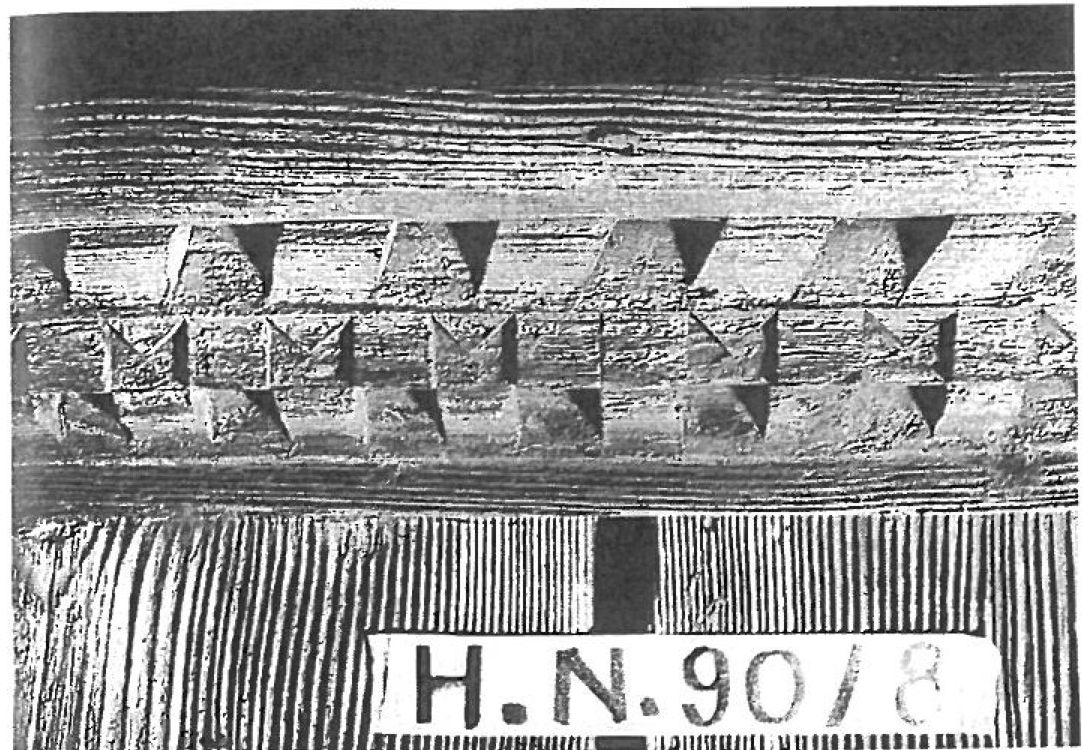
Fig. 18 Detailed view of a windowsill cornice with a round bar and tooth cut motifs from the construction period. Documentation construction study before restoration.
This new building from 1734 has been preserved in its entire construction and in most of its design. Not a single room and almost no doorway was changed. The structural interventions in the building were essentially limited to additive measures in two construction phases: 1870-90 and 1940-60. In particular, they comprised two shingle edging made of fir wood and cement panels on the main floors, a new roof with double-interlocking tiles as well as various window designs on the outside and simple new room designs on the inside with floor, wall and ceiling panels, windows and tiled stoves and the installation of central heating. Only the outbuilding on the western front of the farmhouse and the fragmentary oak edging are likely to date from the first half of the 19th century. The window designs of the house were repeatedly changed. It is of particular interest that the building survey not only revealed the entire original window system, but - with the exception of the windows - also the entire baroque opening and shop design with its special polychromy. In the southern main front and in the two eaves sides, these were double row windows with pull sliding shutters. In the two attic floors, the entire window and shop framework was still original. In the attic, an original framework of the main front was also kept on the upper floor and individual board shutters and beards could be rediscovered as found in the walls of the main floor behind the panels. With these original components together, it was possible to see for the first time in our canton that the polychromy of the baroque window systems of a house was not only designed in one color, but that the individual floors were designed in different color sequences. Original window designs could not be documented in the building. Presumably it was fixed windows with simple leaded glazing and only a small Läufterli sliding sash that was not windproof. The two casement windows found in the attic with one vertical and three horizontal bars turned out to be part of the second generation of windows.

Fig. 19 Detailed view of an outer window frame from the construction period with the polychrome frame in the area of a sliding board shutter. Documentation construction study before restoration.

Fig. 20 Detailed view of a window design from the construction period with the polychromy frame in the area of an ornamental beard on the side. Documentation construction study before restoration.

Fig. 21 Detailed view of a painted supporting arch under the miter shield of the southern main front. Documentation construction study before restoration.
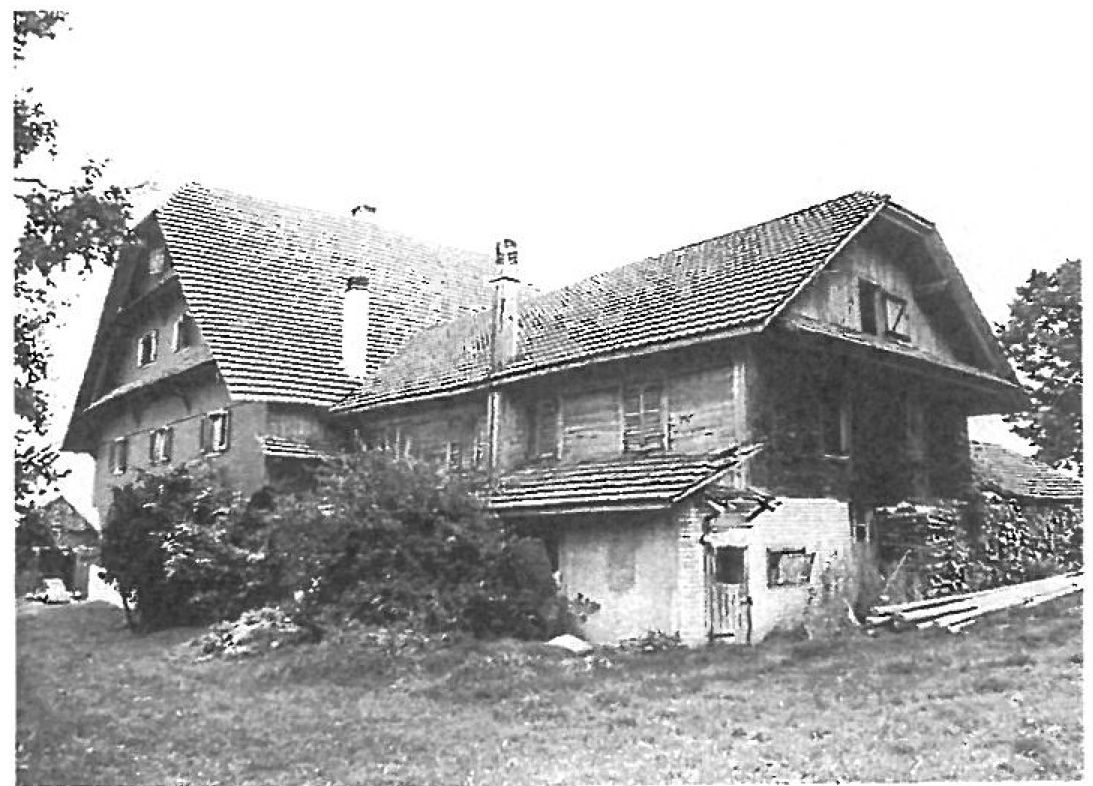
Fig. 22 Northwest view. On the left the main building with external edging, on the right ancillary building. Condition before the restoration.
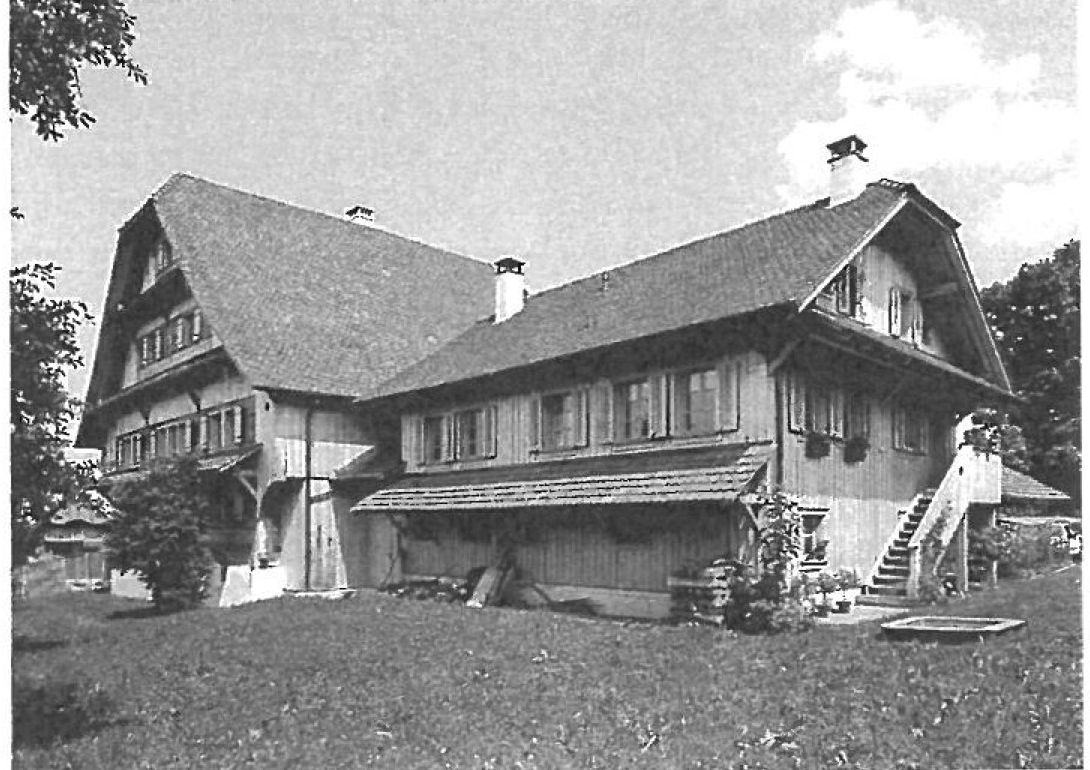
Fig. 23 Northwest view. On the left the farmhouse, on the right the annex built in the 19th century. Condition after the restoration.
For the third generation of windows, presumably between 1870 and 1890, classicist two-wing single windowing with main and front windows and with two horizontal bars per wing was installed for the first time on the two main floors. Around 1940 these windows were renewed in the same form on the ground floor.
Further polychrome versions outside of the window designs could be detected in the area of the canopy beams, chamfers and especially in the delicate versions of the large deer antlers and the roof soffit in the area of the miter shield in the main front. In the painting of the roof soffit, Joseph Hüsler and his wife Verena Bächler may have immortalized themselves with their family coat of arms and initials between the sun, the Christ and Mary monograms and the moon. Inside, a small flower tendril could only be documented in a lintel and parts of two color versions in the paneling of the back room.
5. The Restoration
5.1 The Project
Once again, it should be emphasized at the outset: The creation of a construction study and construction documentation by experienced specialists and in particular the involvement of a qualified architect is of decisive importance for the quality of a construction project. What a building owner initially invests in this, he saves on construction time and in advance especially in terms of construction costs.
The outstanding importance of this farmhouse in our rural cultural landscape and the very large construction volume of more than 3200 m3 (farmhouse around 2400 m3, outbuildings around 800 m3) required different variants for a technically convincing and financially viable restoration concept for the client. A solution corresponding to these requirements could also be found in the present case with a package of accompanying measures: Own contributions by the builder, investment aid from the Agricultural Loan Fund, monument conservation subsidies from the federal government, canton and municipality as well as the interest on three residential units.
These were planned for the installation of a 41/2 room apartment on the first floor and one on the first floor of the farmhouse as well as a 51/2 room apartment on the first and top floor of the adjoining building. Through this division of use, the unique roof construction of the farmhouse, with the two attic and mezzanine floors, could be preserved in its original condition from the construction period without any additional fixtures (paneling, insulation, windows, hatches and doors, etc.). For this special and very rare peculiarity of the roof structure with a «Schlüüftili», this is a stroke of luck in terms of monument conservation.
An administrative complaint against the spatial planning approval for the third residential unit in this large, existing building volume of more than 3200 m3 put the realization of this restoration into question. Thanks to the rejection of the administrative complaint by the government council and the fact that the opponents waived further legal proceedings, the entire restoration of the building was able to be carried out without further delays.
5.2 The Outbuilding
In a first stage, the simple outbuilding from the 19th century directly attached to the farmhouse was renovated. The building had long lost its original functions (i.e. rooms for day laborers, supplies and pigs) due to the changed use of the farm and was only used as a storage room and was therefore not specially maintained. Despite structural damage, the project could be kept and professionally restored. Common infrastructure facilities for the farmhouse (heating, washing, stairwell, etc.) and one of the three apartments is placed on the upper and top floors.
The building was insulated and clad with simple vertical board formwork and cover strips, the windows and shutters were renewed in line with the original findings. After completing this work, the farm family temporarily moved into this outbuilding.
5.3 The Farmhouse Inside
In the main house, the restoration work began with the demolition of defective and worthless fixtures from the last few decades. The original room chambering of the building, which has been preserved since the construction period, was retained, with the exception of an additional subdivision of one chamber per floor for the bathroom-toilet. On the upper floor, the northern central chamber is being converted into a kitchen. As a concession to better light the large chambers on the northern front, an additional window was granted per room.
Although the structural and structural condition of the building was still above average for a restoration object, various structural parts that were overloaded or damaged by previous interventions had to be reinforced or replaced. This included in particular the roof structure, which had been overstrained at least since the roofing with double-interlocking tiles.
The entire ceiling construction above the basement (at the same time the ground floor) had suffered great damage in the area of the wooden construction due to the rising moisture in the floor. The causes are to be found in the desire for more warmth on the ground floor and the fatally blocked drafts in the basement. The old ventilation system in the basement was restored and the enlarged exterior windows returned to their original size. With the installation of a larger blue and white tiled stove from 1870, the floor structure was additionally damaged. The basement ceiling therefore had to be subdivided into even fields with construction beams. Under the ceiling of the living room, the clad longitudinal beam made of alder wood with the cut-off plait pattern, which was still visible on the wall support, was replaced by a new, hewn alder beam.
The remaining wall coverings in corridors and chambers with claw and fiber straps or with Pavatex panels were removed without replacement and the wall structures were left visible. The wall panels on the inside of the outer walls, which were added because of the additional thermal insulation, are an exception.
For the first time in the canton of Lucerne, a monument was completely insulated with ecological thermal insulation made of paper cellulose. The insulation was drawn up or blown in on the inside of the outer walls and on the screed floor and covered with wall or floor panels. Reinforced and an effective insulation against the rising damp of the natural soil was left in place.
On the upper floor, in addition to the static renovation of the ceiling construction, the additional load for the sound insulation with sand pouring between the two apartments had to be taken into account. That is why the oldest floor boards that were still usable were reused as ceiling boards and, analogous to the original floor, a 30-40 cm wide pinewood parquet was laid on the two main floors. Fortunately, sandstone slabs were again laid out in the hallway and in the kitchen.
On the ground floor, the original paneling from the construction period, partially hidden under new wall and ceiling paneling from the 19th and 20th centuries, was restored and supplemented with wide board fillings and profiled friezes. The ceiling boards in the four main rooms were so badly damaged by previous renovations that they had to be replaced. The three ceilings on the ground floor, in the area of the southern main front, were similar to the findings with the verifiable profiled frieze and round bar.
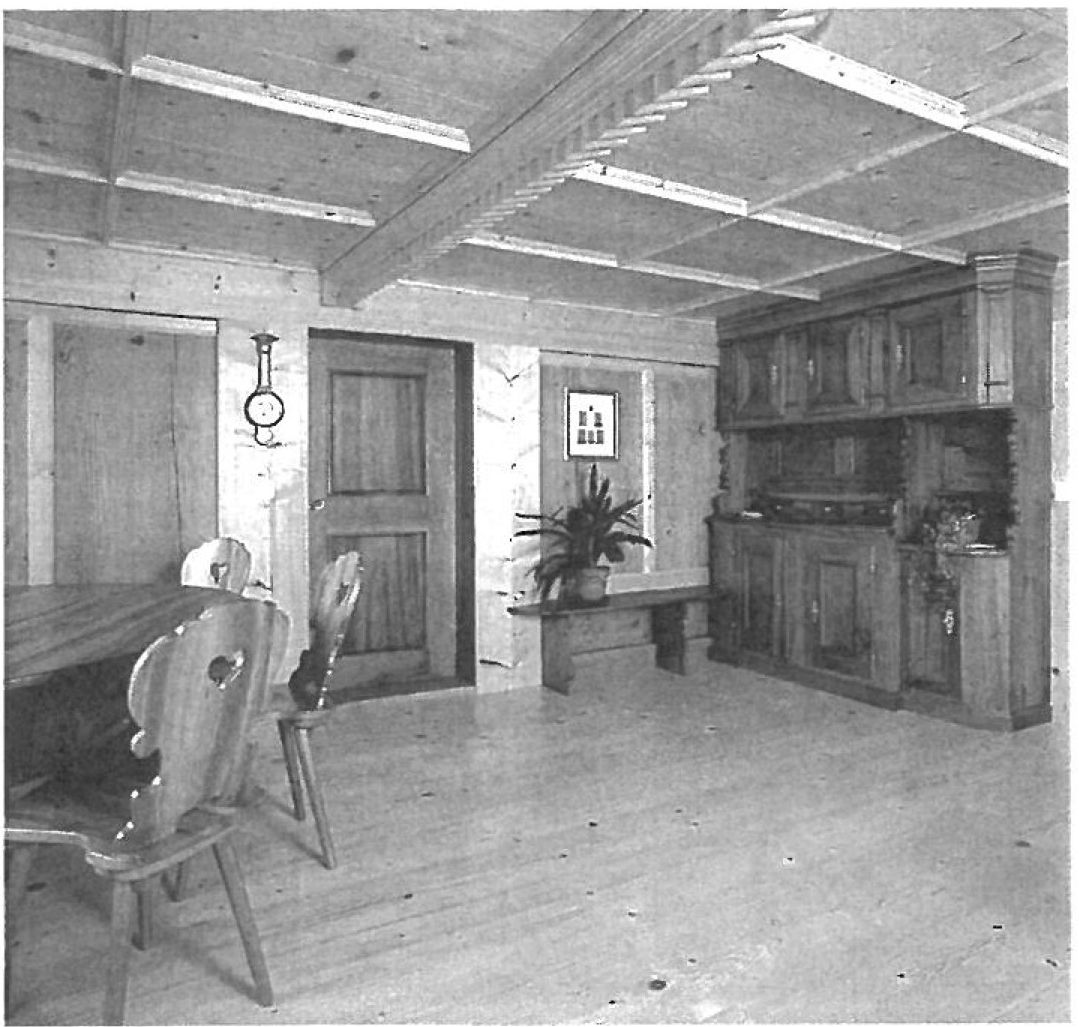
Fig. 24 Detail from the living room on the main floor with built-in buffet, doors and wall benches made of walnut, knotted longitudinal beams made of alder and field ceiling, wall paneling and wooden floor made of fir. Condition after the restoration.
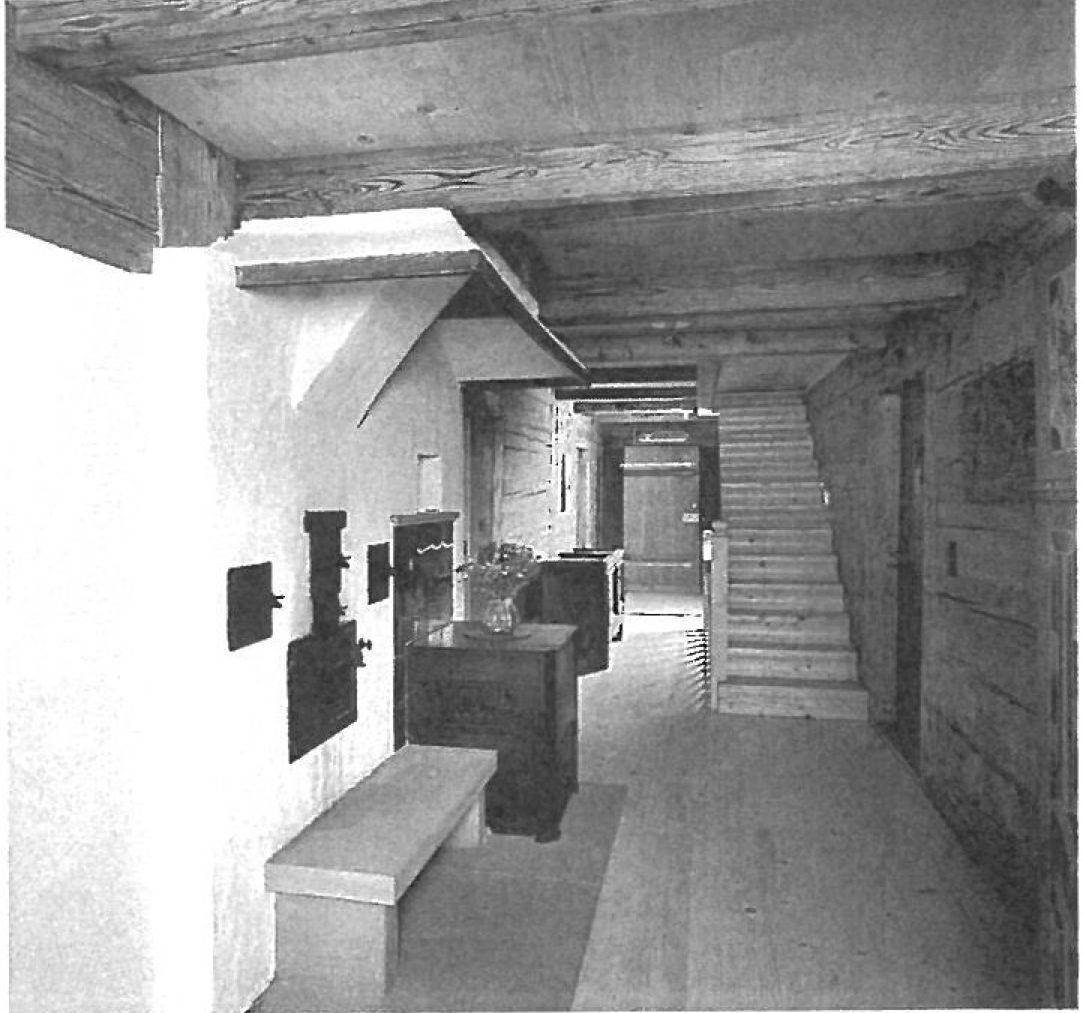
Fig. 25 View through the central aisle on the main floor. On the left the firing for the tiled stove in the room with built-in green tiles from the former stove room, on the right the block staircase from the main floor to the upper floor. Condition after the restoration.
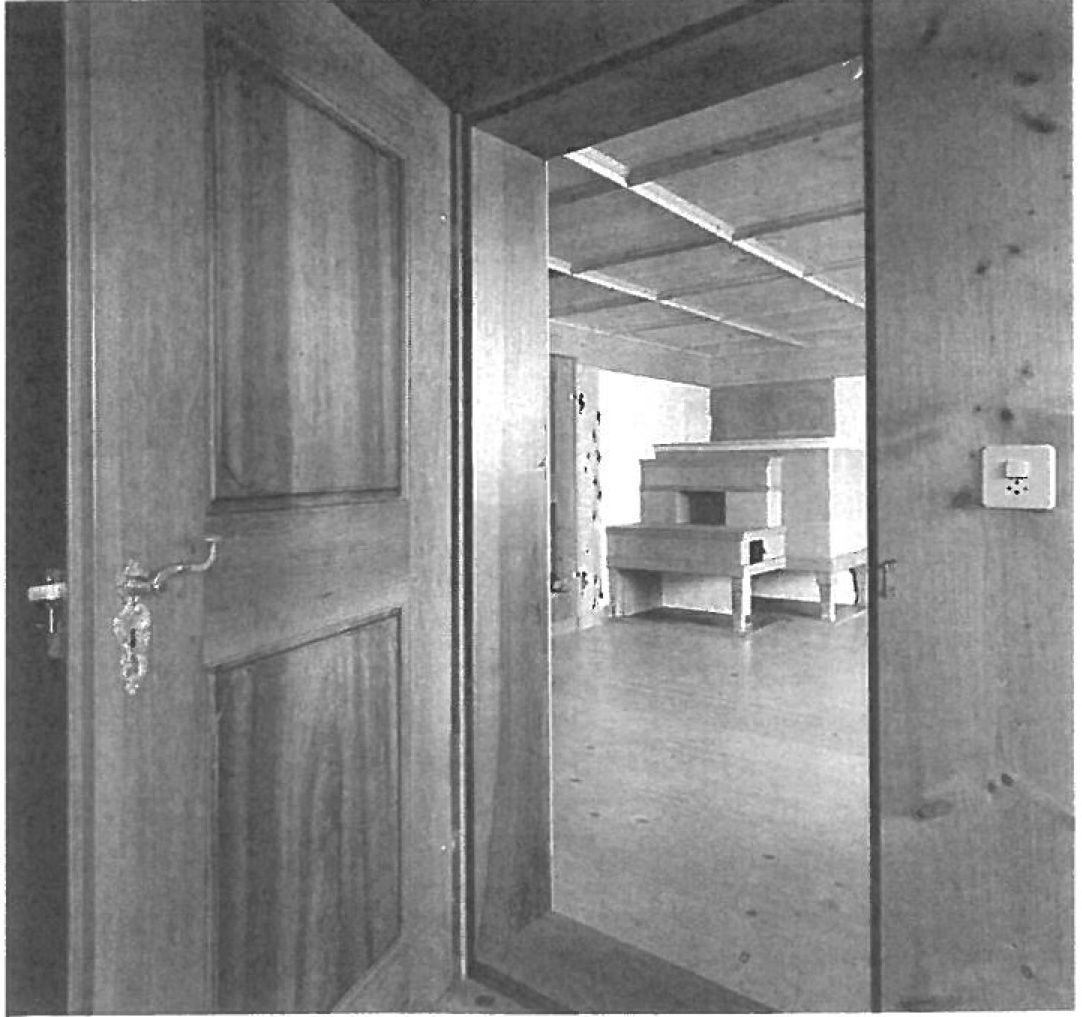
Fig. 26 main floor. View from the chamber into the living room. In the foreground a walnut framed door, in the background the blue and white tiled stove from 1870. Condition after the restoration.
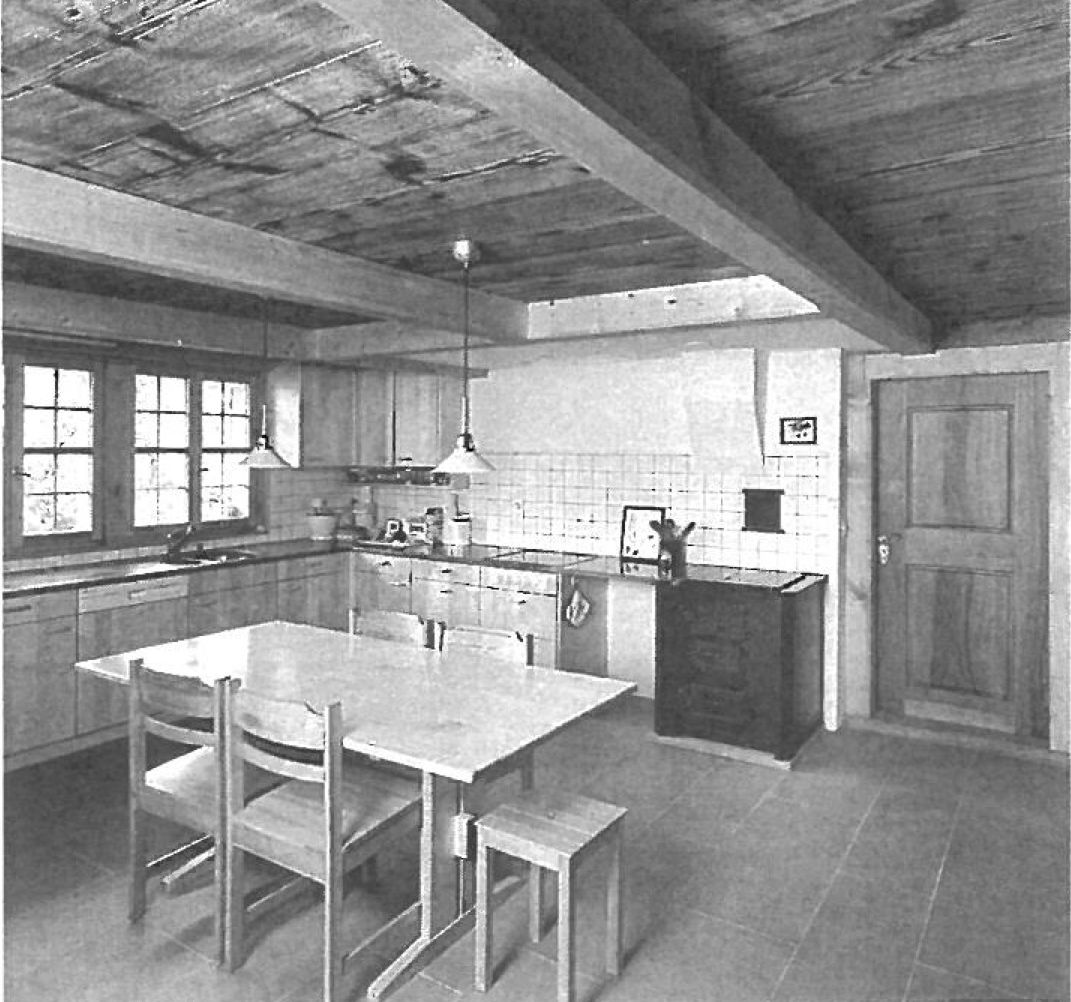
Fig. 27 Detail from the kitchen on the main floor with the fireplace in the original location. Condition after the restoration.
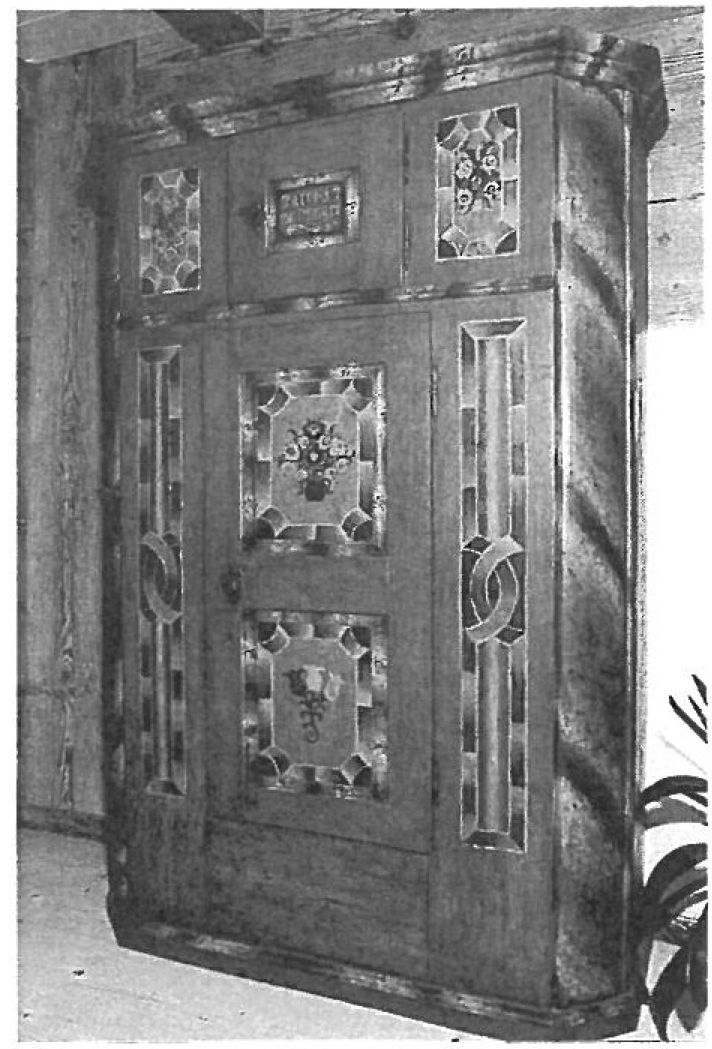
Fig. 28 Painted chamber box from 1789 in the center aisle of the main floor. Condition after the restoration.
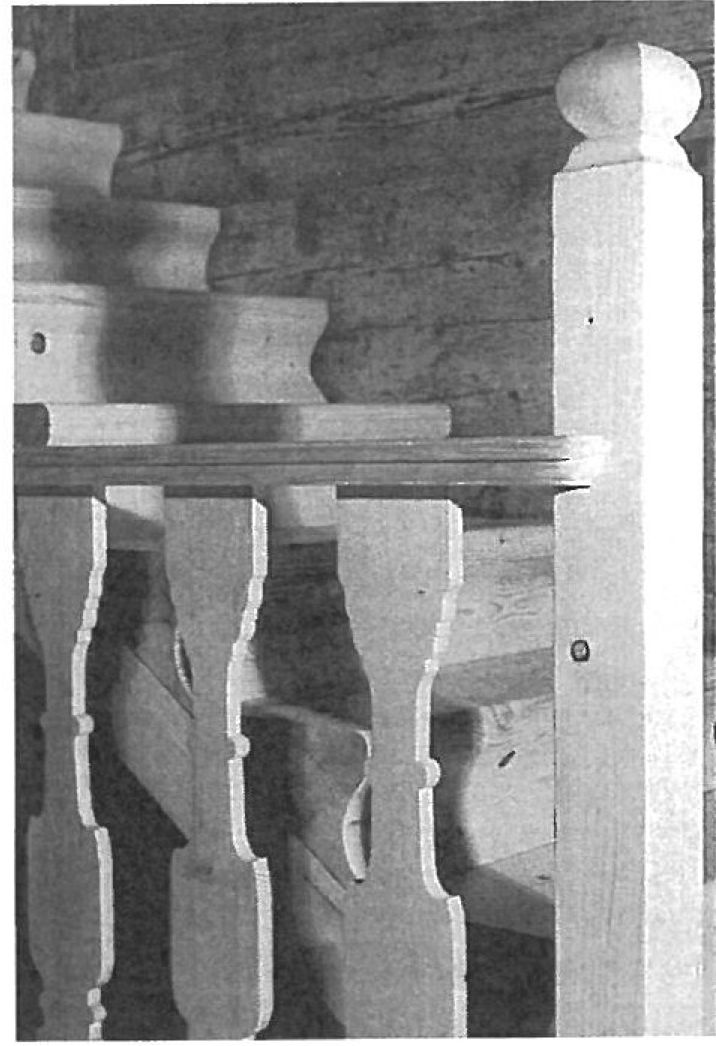
Fig. 29 Detail of the stairs at the front of the main floor to the first floor. in the foreground the parapet with board balusters, in the background the block steps with the concave fronts. Condition after the restoration.
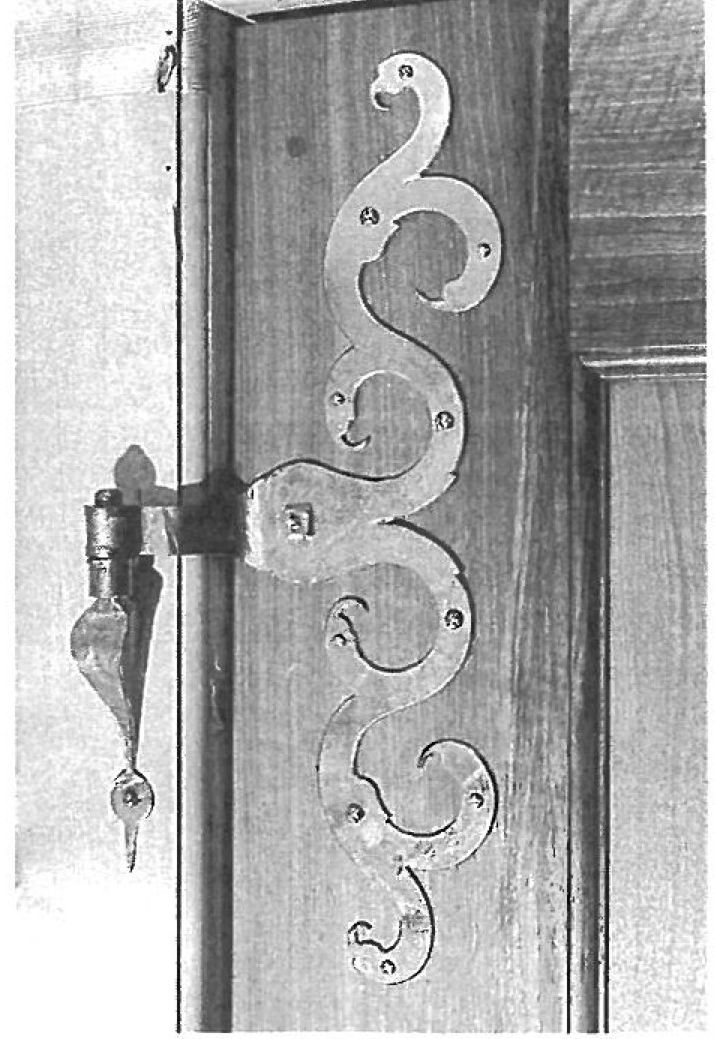
Fig. 30 Detail of a tinned door hinge from the construction period on the main floor. Condition after the restoration.
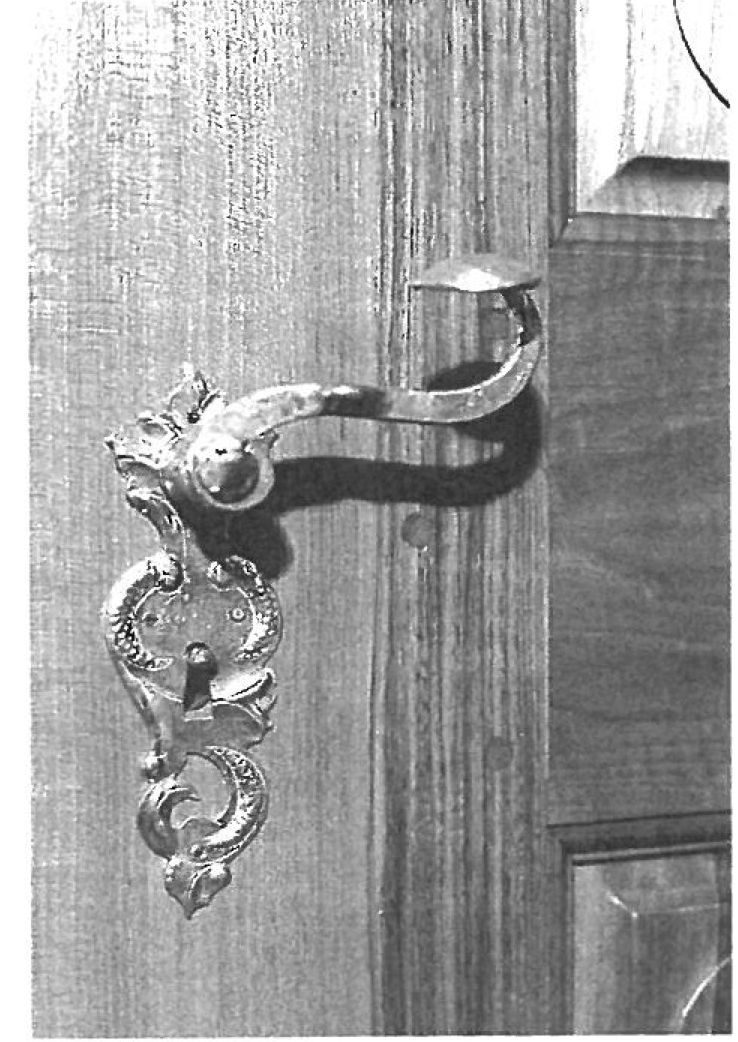
Fig. 31 Detail of a room door on the main floor. Dainty door plate with door handle, tin-plated. Condition after the restoration.
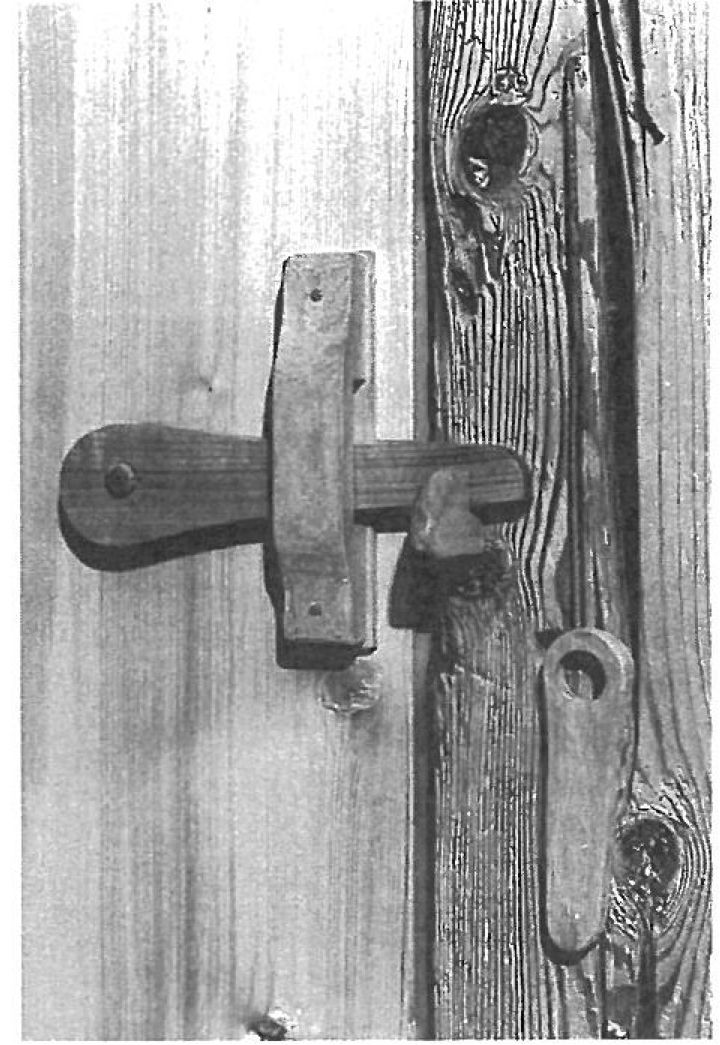
Fig. 32 Detail of a chamber door on the upper floor with the wooden latch and the inner wedge lock. Condition after the restoration.
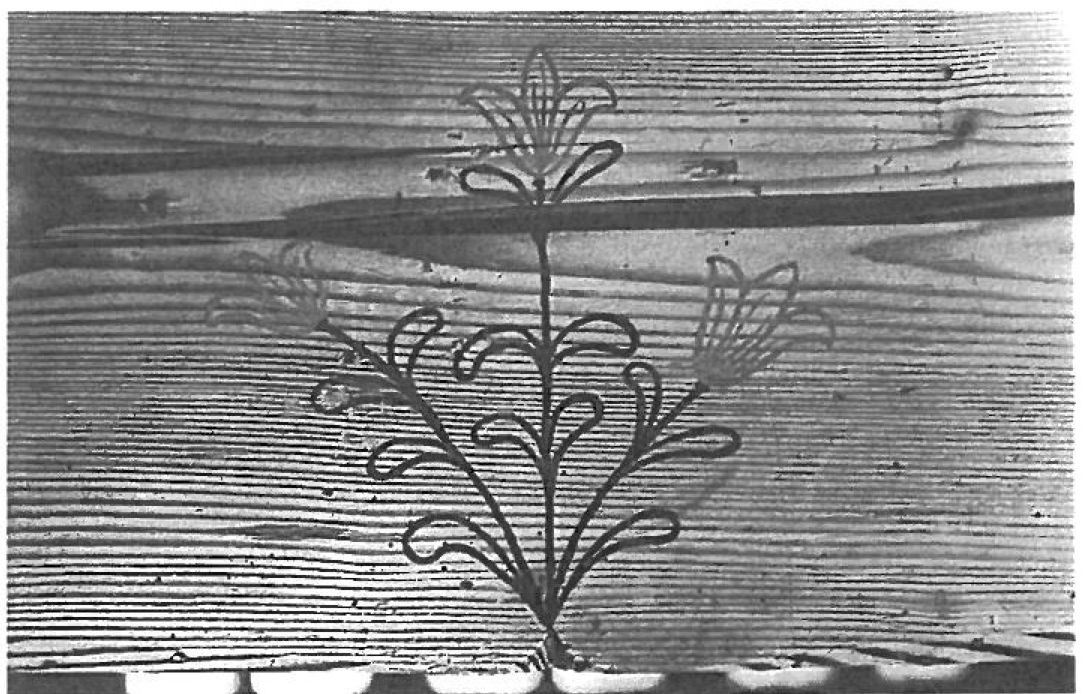
Fig. 33 Individual decorative motif in the lintel beam of the north central chamber on the upper floor. Condition after the restoration.
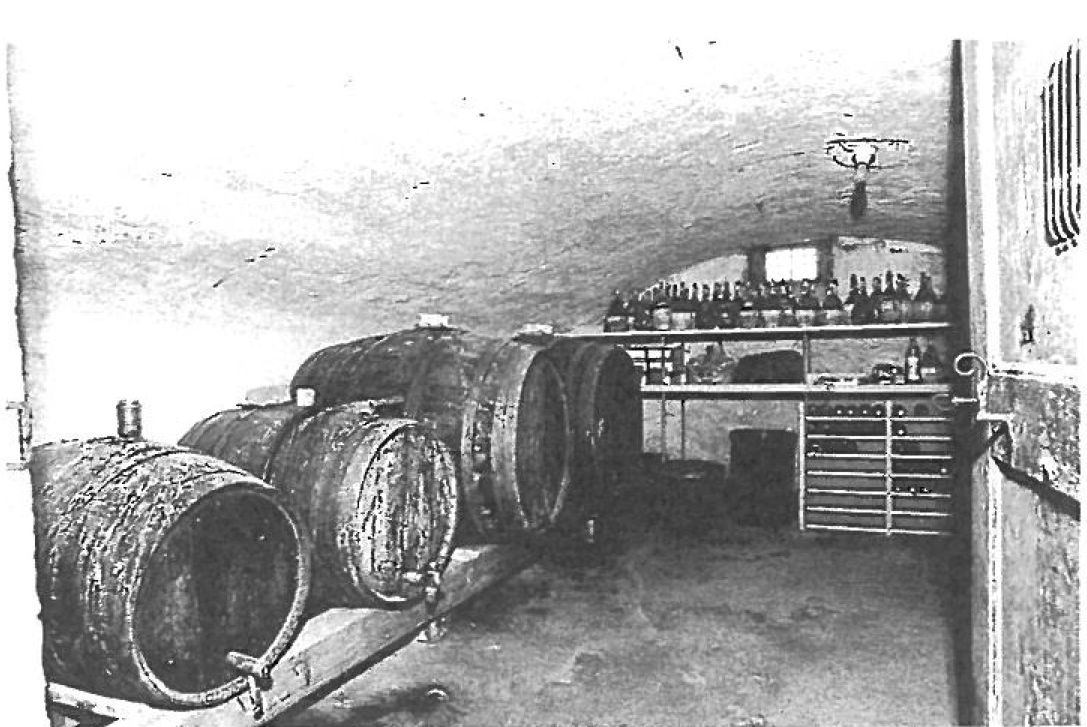
Fig. 34 Vaulted cellar. Condition after the restoration.
5.4 The Exterior of the Farmhouse
The structural condition of the building's exterior turned out to be relatively good and largely still influenced by the construction period. In addition, the design from the construction period was partially retained in the main front in the area of the attic and in the rear and in the arbors on the eaves. The greatest structural changes to the exterior of the building were made between 1840 and 1870 and around 1940 with the partial installation of the classicist individual windowing and the wooden clapboard edging on the two main floors. Since these windows and the wood shingle edging, both of which belong to the particularly stressed outer skin of a building, had become dilapidated again and had to be replaced with all windows as part of the overall restoration, the results of the building investigation were of particular interest. The abundance of extraordinarily detailed findings from the construction period of the house made it possible to formally renovate the window and shop design in the main fronts according to the original condition of 1734.
Of particular importance is the finding of the original polychromy of the windows and shop design on the southern main front and the two eaves fronts. Never before has it been possible in the canton of Lucerne to demonstrate such a richly colored finding with different, alternating color versions between the floors and true to the original to this extent and in this variety.
Taking this into account, the original system of window groups with double and row windows, with vertical pull-out and horizontal sliding shutters as well as with the very delicate window and shop designs were incorporated into the restoration project and implemented in the southern main front and in the two eaves fronts.
On the ground floor, the main front was again in the middle a group of windows with six row windows (room) and on each side a group of windows with four row windows (chambers), each with a drawer per window opening as well as a group of windows on the upper floor with three row windows with side sliding shutters (central chamber) and one double window each with side sliding shutters, as they were still preserved in the attic floors.
Renewing the damaged wooden shingle edging, which was created in connection with the classicist windowing, was also not necessary thanks to the new interior insulation.
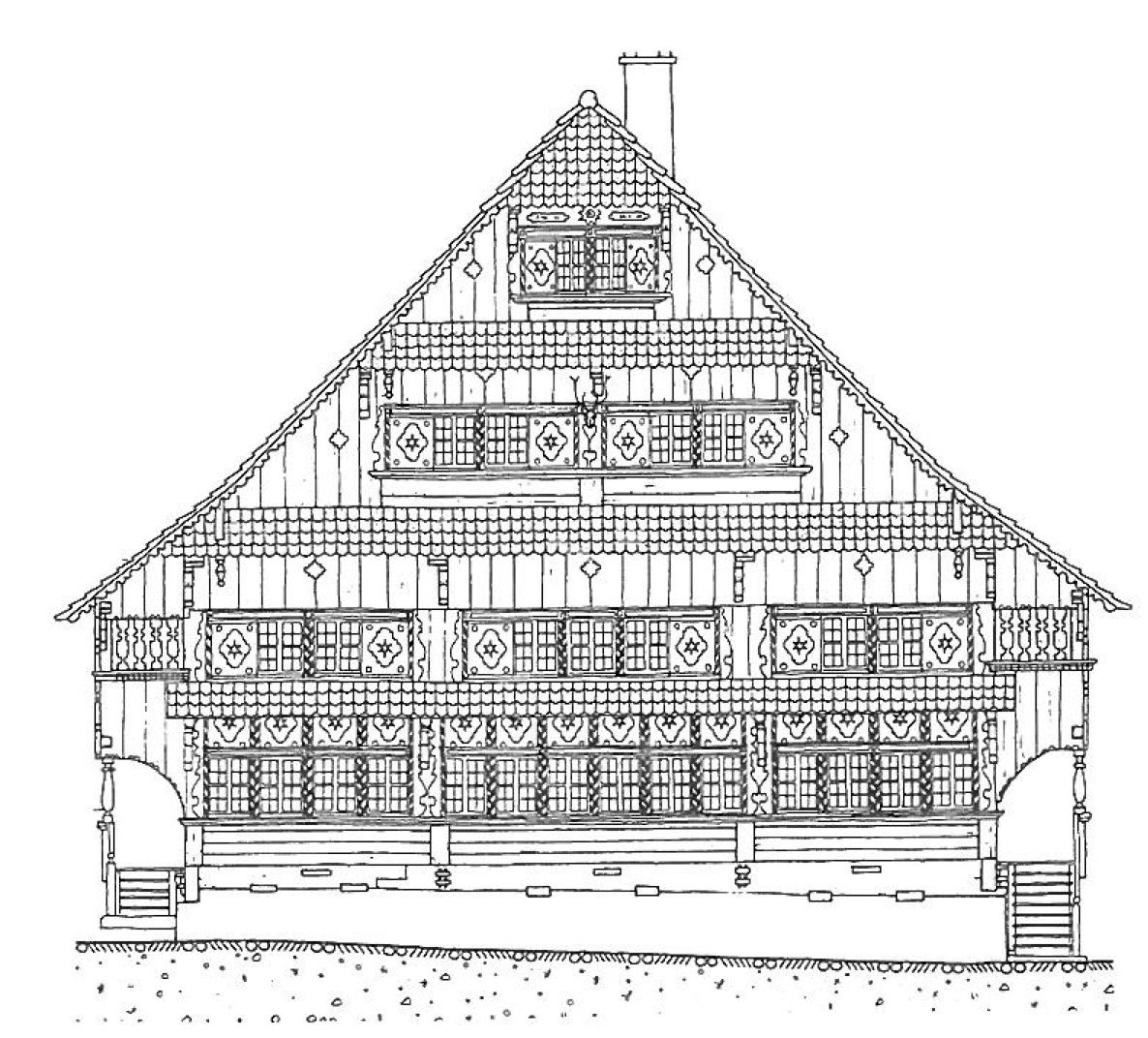
Fig. 35 Southern main front with the row windows on the main floor and the two resp. three-part window groups on the upper floors. Condition after the restoration. M 1: 200.
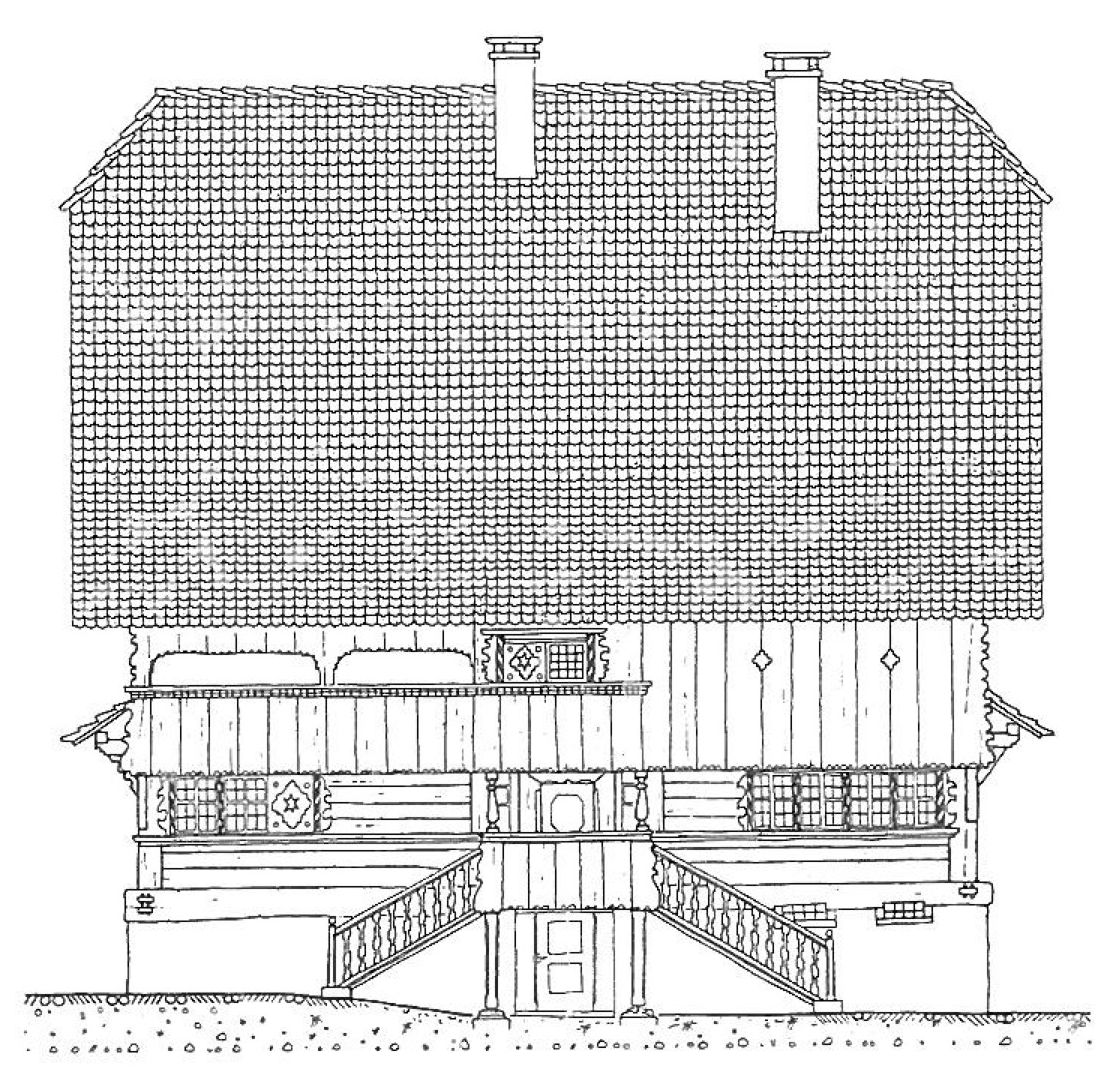
Fig. 36 Eastern side front with the two-armed main entrance stairs, basement entrance and the two or four-part window groups on the main floor. Condition after the restoration. M 1: 200.
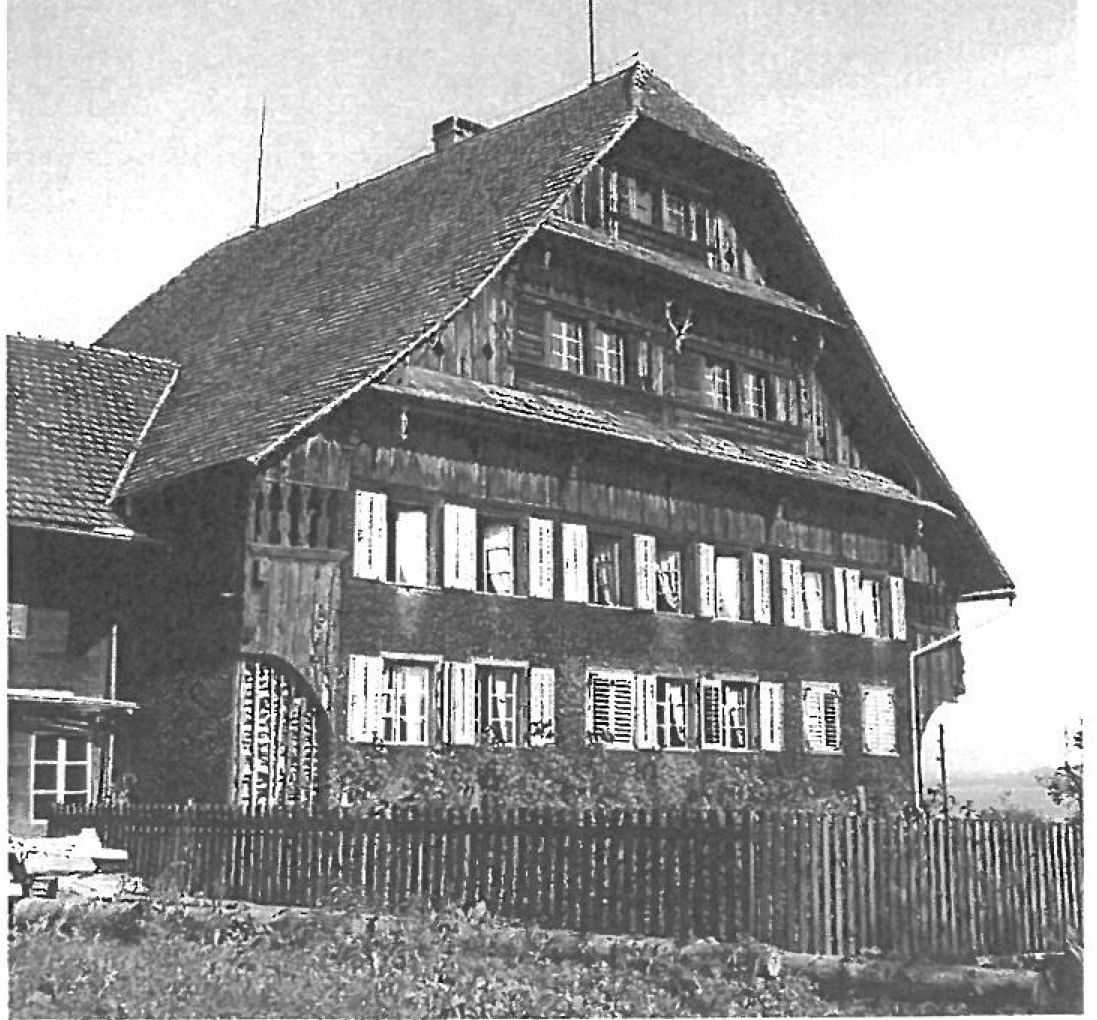
Fig. 37 View of the south front with the wooden clapboard border and the individual windows on the two main floors. Condition before the restoration.
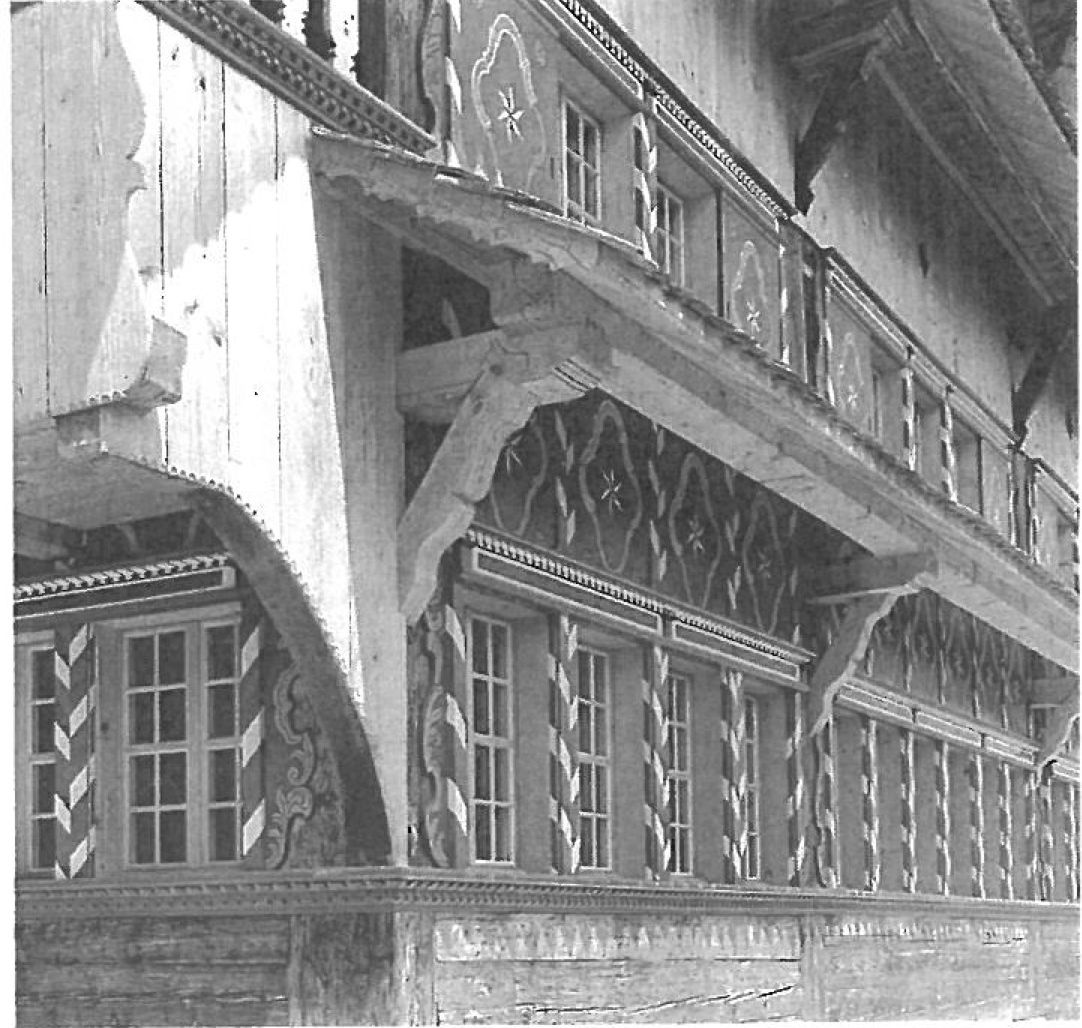
Fig. 38 Detailed view of the south-western corner of the building with the row of windows, the surrounding cornice bar with tooth frieze decoration, the mighty profiled canopy structures and the side arbor. Condition after the restoration.
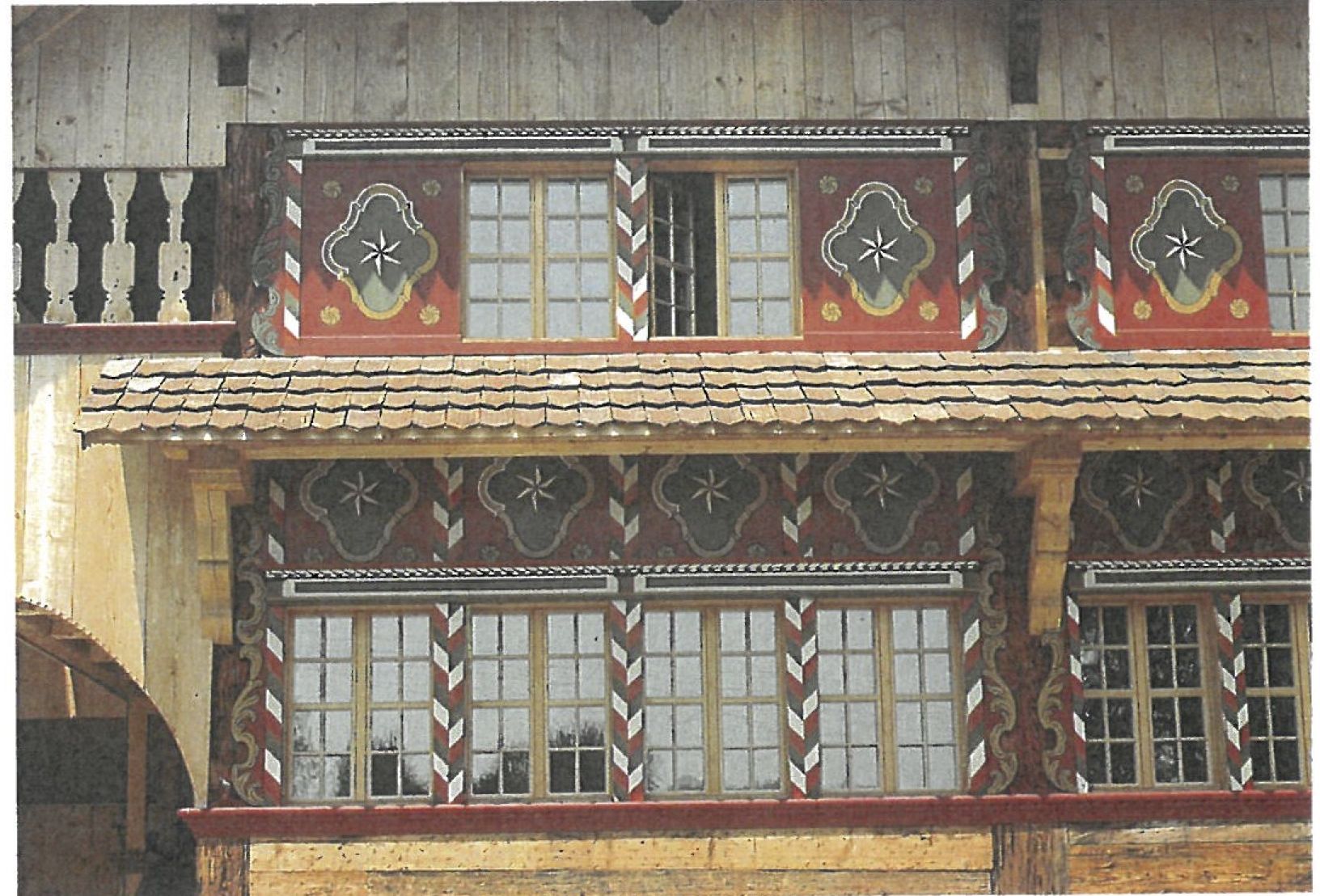
Fig. 39 Detailed view of the main south front. Row windows with the vertical pull shutters on the main floor and the double window with horizontal sliding shutters on the upper floor. The built-in windows are designed with capitals and ornamental beards and differentiated polychromy on each floor. Condition after the restoration.
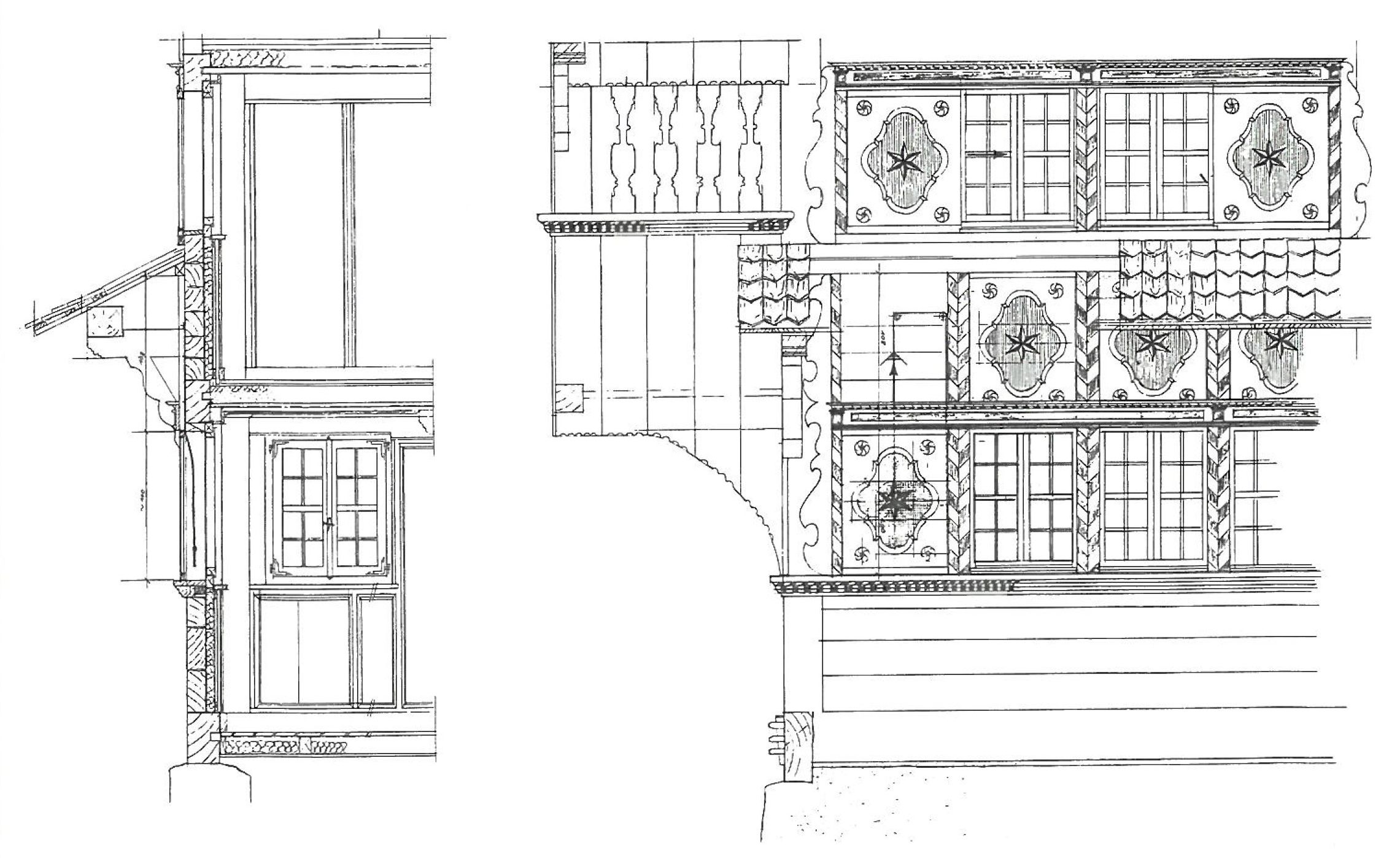
Fig. 40 Detailed plan from the southern main front. View and section of the window design of the main and upper floors with canopy and side arbor. On the main floor, the row windows have vertical drawbars and a richly profiled belt beam as the window parapet. The double windows on the upper floor have horizontal sliding shutters. The row and double windows for each group of windows are framed in a delicate framework with ornamental beards and rich polychromy. Condition after the restoration. M 1:50.
As a substitute for the formal structure of the window openings, an example preserved in the attic, presumably of the second generation of windows from the second half of the 18th century, with two sashes and one vertical and three horizontal bars each served. The new window was constructed according to the system of screwed double glazing with single glazing according to the above-mentioned findings in the outer sash and subdivided, narrow insulating glazing in the inner sash.
The paintings on the soffit of the miter shield with monograms, sun and moon as well as the family coat of arms and initials could be restored as well. The large, colored hunting trophy on the outside of the middle attic story is identical to the types of polychrome on the roof soffit and the window designs and is perhaps intended as a reminder that the builder was a successful hunter.
The board formwork was part of the stressed outer skin of the building and therefore had to be renewed both in the area of the top floors and the arbors. The traditional serenity holes were adopted accordingly. In addition, the broken, continuous canopy on the ground floor of the main front was renewed analogous to the existing construction on the upper floor, the cut-off, also continuous window cornice profile beam was replaced, the shutter boards were put on and the sleeper locks were patched.
On the eaves sides, the outside stairs lead to the two main entrances of the house. Originally both were double-barreled. But they have been renewed in the course of time. In the eastern front, it was possible to restore the two-flight stairs with the central landing and the original upper support columns. The flights of stairs each consist of two cheek trees with profiled block steps, which are saddle-up and are accompanied by a baluster-like railing. All shapes and profiles come from preserved components of the staircase inside.
The two outer doors with a heavy frame made of oak are particularly impressive. The eastern main entrance door with delicate flat carvings and a profiled frame attachment as well as the year and the master carpenter in the lintel could be restored professionally and stylishly.
On the eaves fronts on the ground floor, with the double window, the combination with a vertical drawer in the arbor and a horizontal sliding shutter in a group of windows and on the eastern eaves side the group of windows with four row windows and with four recesses for horizontal drawers are interesting. A special feature of this eastern front on the upper floor is the rich formation of window and shop design in the arbor area, which dates back to the construction period. Inside, the central aisle is extended to the arbor front. The sawn-out decorative shapes of the first and last arbor board could be taken from the original.
Larger monument preservation concessions were made with regard to the changed use and the structural condition on the rear. In contrast to the
In the other three facade designs, the northern weather side has always been designed very simply since 1734 with only one window opening each with folding board shutters on the side without any dainty designs or color frames. Only the kitchen had a barred double window. For the changed use of the space, an additional window was allowed on each of the two main floors and the simple design was retained. As an exposed weather front with various double layers of outer skin (wooden shingles, cement panels), this façade had structural damage that had been exacerbated on the ground floor due to earlier shed extensions and the effects of water from the kitchen. A simple canopy structure has been added here for better protection. The board cladding in the area of the attic and arbor stories had to be renewed analogous to the main front.
In order to make the construction work easier to read, especially in the area of the entire restoration, all renewed wooden parts were left in their light natural tone so that they can begin a natural aging process again. Of course, the polychromy frames from the building's construction period, which were renewed on the building, are an exception.
The plastering work inside and outside was either supplemented or renewed with hydraulic sump lime mortar in consideration of a good climate balance in the basement.
Instead of the large double rebate cover, the roof construction, reinforced with additional diagonal beams, was clad with plain tiles again, but for maintenance reasons no longer with a single but with a double roof.
The design of the surroundings was left as natural and as simple as possible. Only the house garden for flowers and vegetables appears formally, which has been renewed at the old location and in a traditional style.
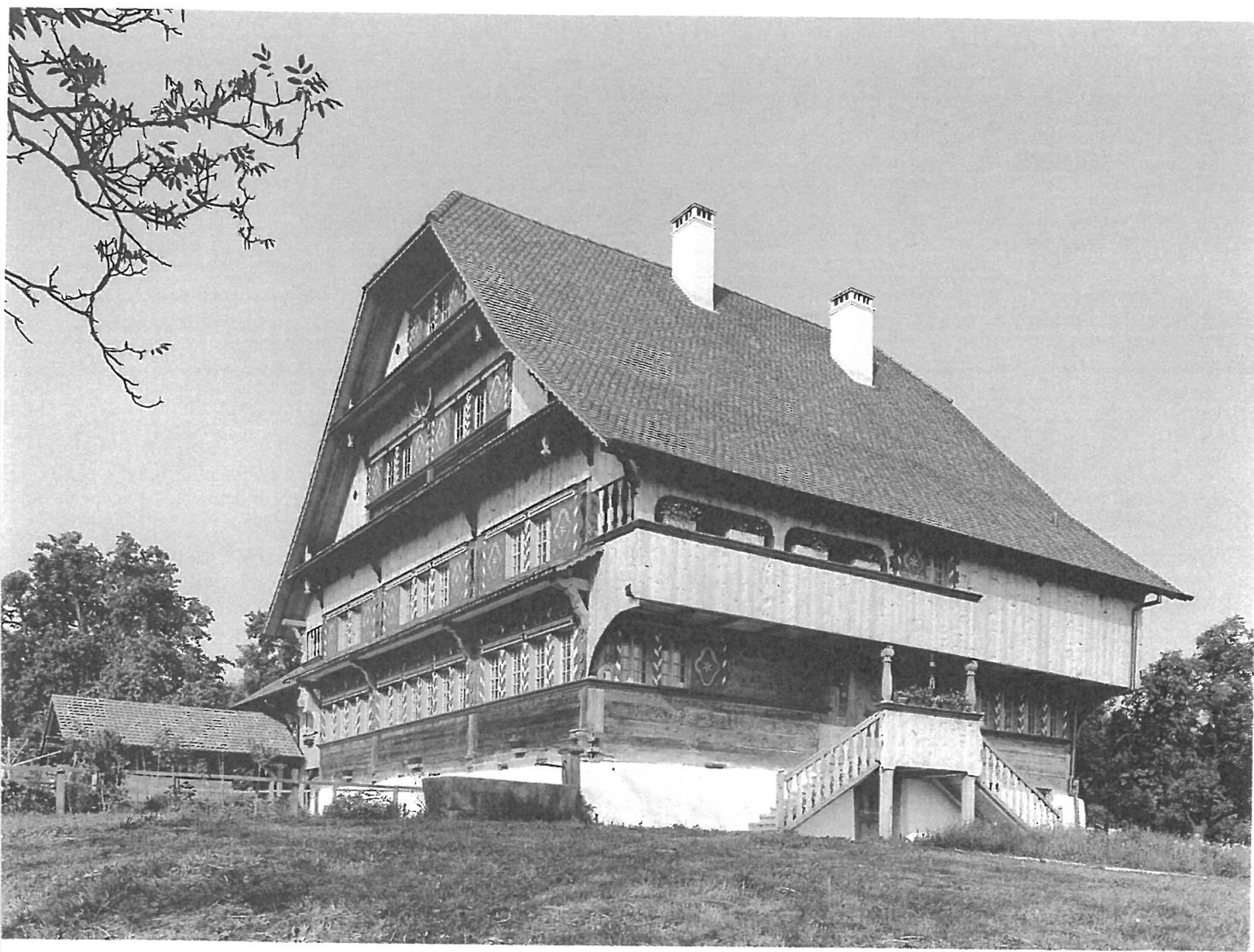
41 View from the south-east with the cantilevered arbors and the two-armed main entrance stairs. Condition after the restoration.
Sources:
Ruswil municipality archive: inheritance from 1755; Division protocol 1755. Lucerne State Archives: StALU COD 4135 Valid and purchase protocol of the tmtes Ruswil 1675-1692, p. 570f .; StALU AKT 27/2913 Community Artschaft cadastral appraisals 1799-1803; StALU AKT 27 / 4D Tabelm over the tithe of the municipality of Nottwil 1801; StALU CA 66 Kaister of the municipality of Nottwil 1823.
Sursee town archive: Purchases by the community of Ruswil 1700-1710, Kaufpro-31 (011 from 1709; purchases by the community of Ruswil 1710-1719, purchase record from 1713; purchase records II Nottwil 1832-42, purchase records from 837; validity record IV Notwil 1864-73; purchase letter VIII Nottwil 869-74, purchase letter from 1873.
iterate r:
eopold Brandstetter, The settlements of the Alemanni in the canton Lu2rn, Stans 1919.
rnst Brunner, The Farmhouses in the Canton of Lucerne, Basel 1977.
lax Lemmenmeier, Lucerne's agriculture in transition, Lucerne 983.
laus Niederberger, The Under Rot farmhouse in Ruswil, in: Jahr-ach der Historischen Gesellschaft Luzern 7, 1989, pp. 43-73.
ans Ulrich Schiedt, Nottwil, Hof Huprächtigen, house and court history, Mskr. Cantonal Monument Preservation Lucerne, 1991.
seph Stirnimann, history and genealogy of the Hüsler family, Hu-ächtigen, Nottwil, Mskr. Cantonal Monument Preservation Lucerne, 1991.
Photo credits Niederberger:
Ernst Brunner, Farmhouse Research: Fig. 37
Urs Butler, Lucerne: Figs. 1, 23-27, 38, 39 and 41
Cantonal Monument Preservation Lucerne: Fig. 3-12, 17-22, 28-36 P. Haupt, Ruswil: Fig. 40
Hans Marti, Nebikon: Fig. 13-16
Lucerne Central Library (owned by the Lucerne Corporation): Fig. 2
Author's address:
dipl. Arch. Claus Niederberger Cantonal Monument Preservation Lucerne Frankenstrasse 9
6002 Lucerne